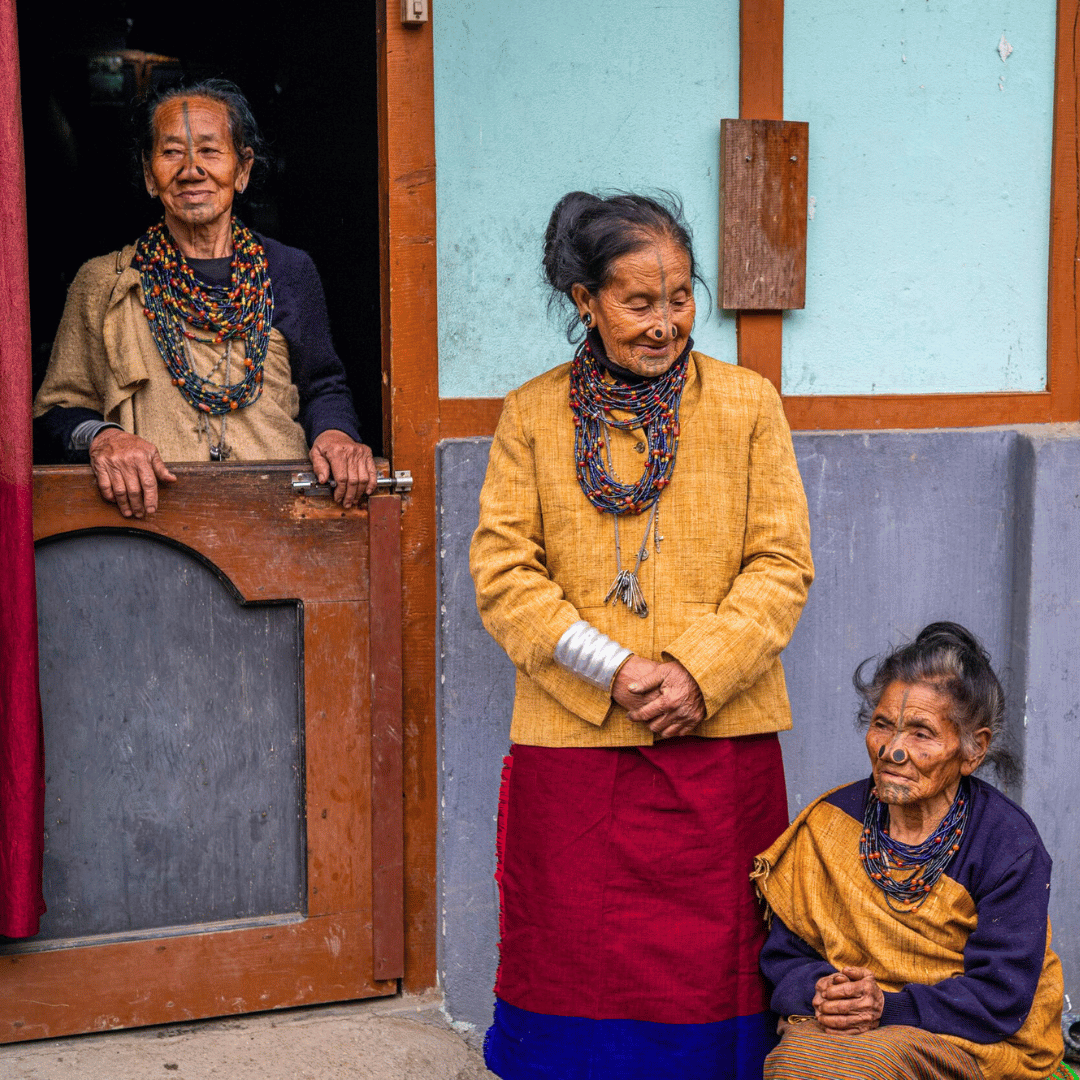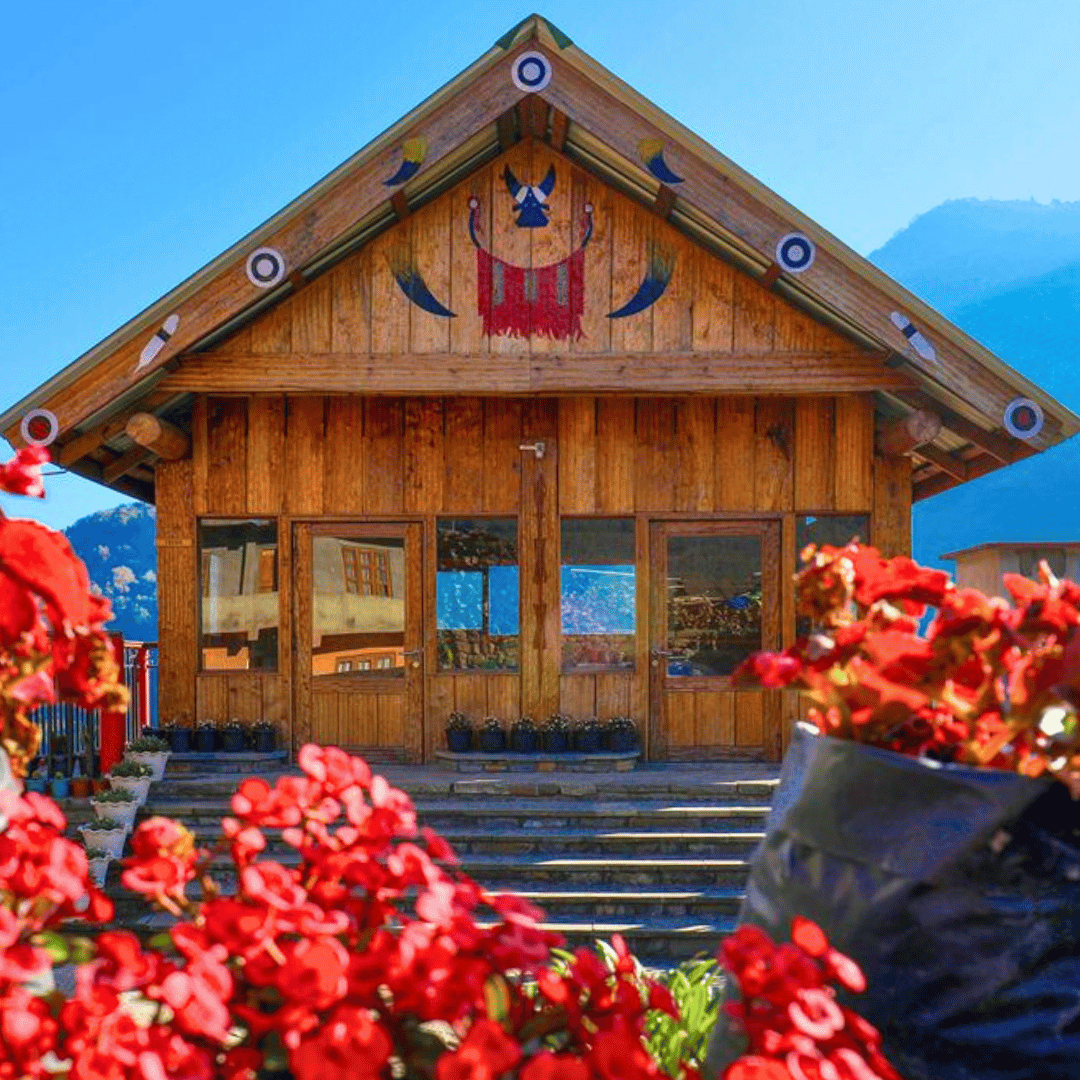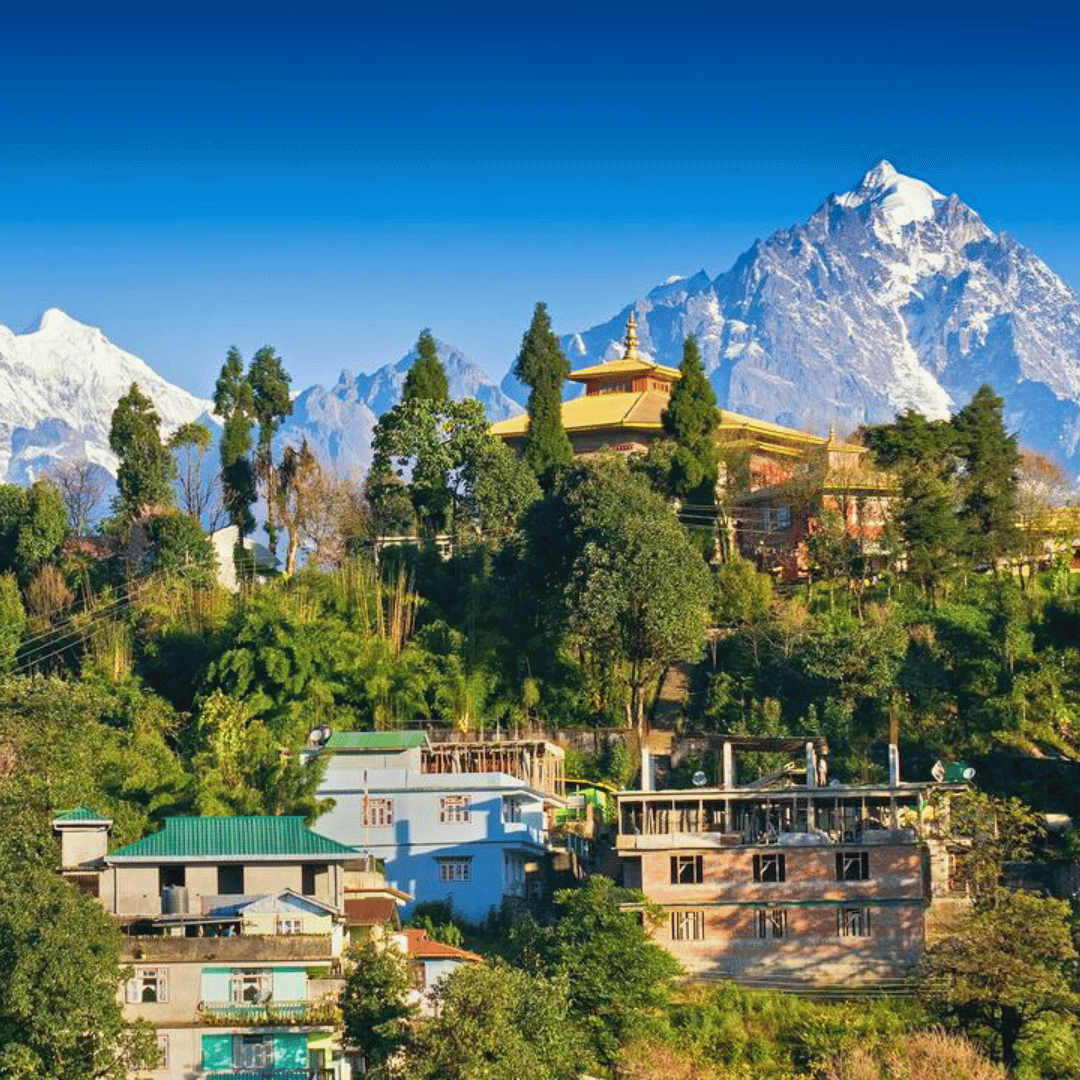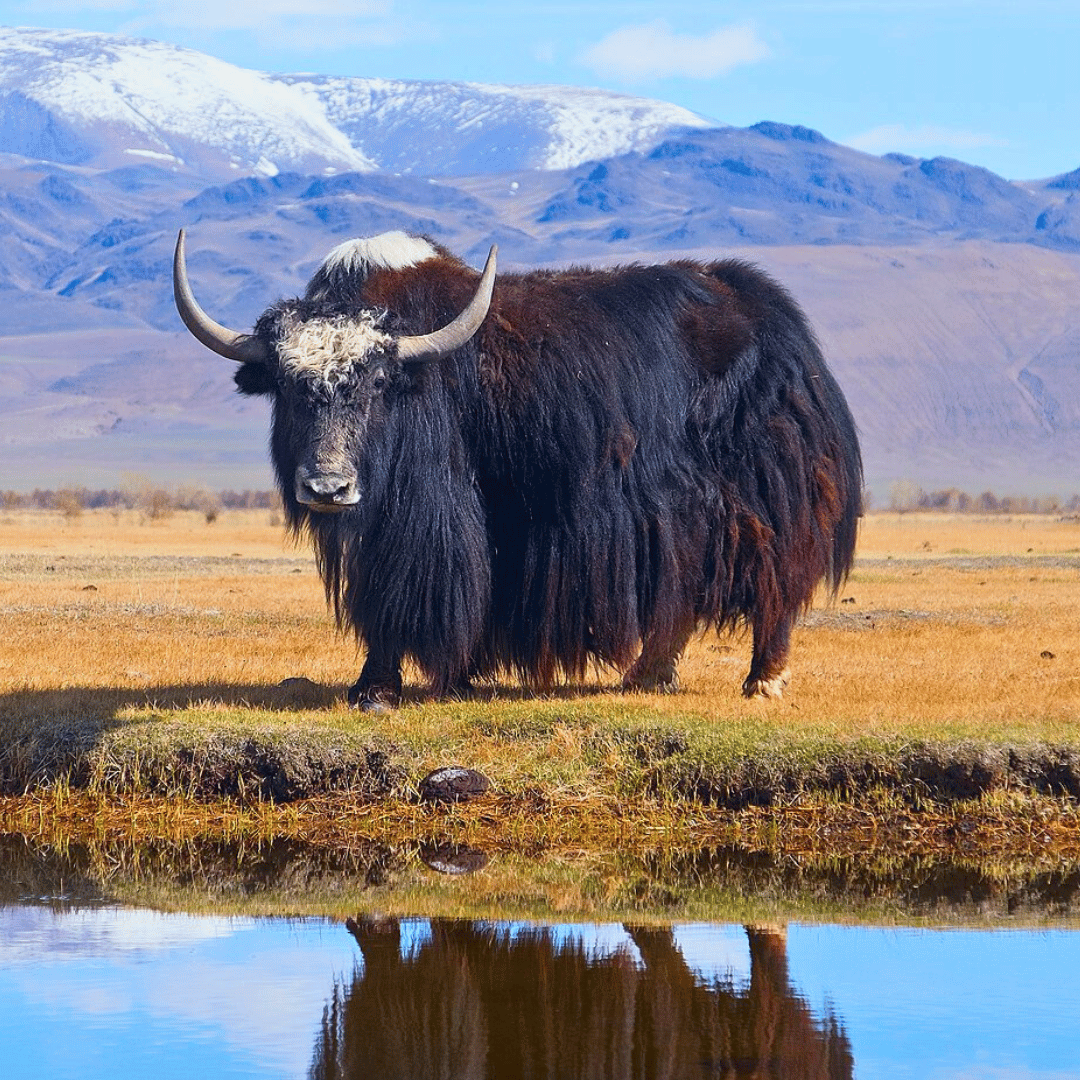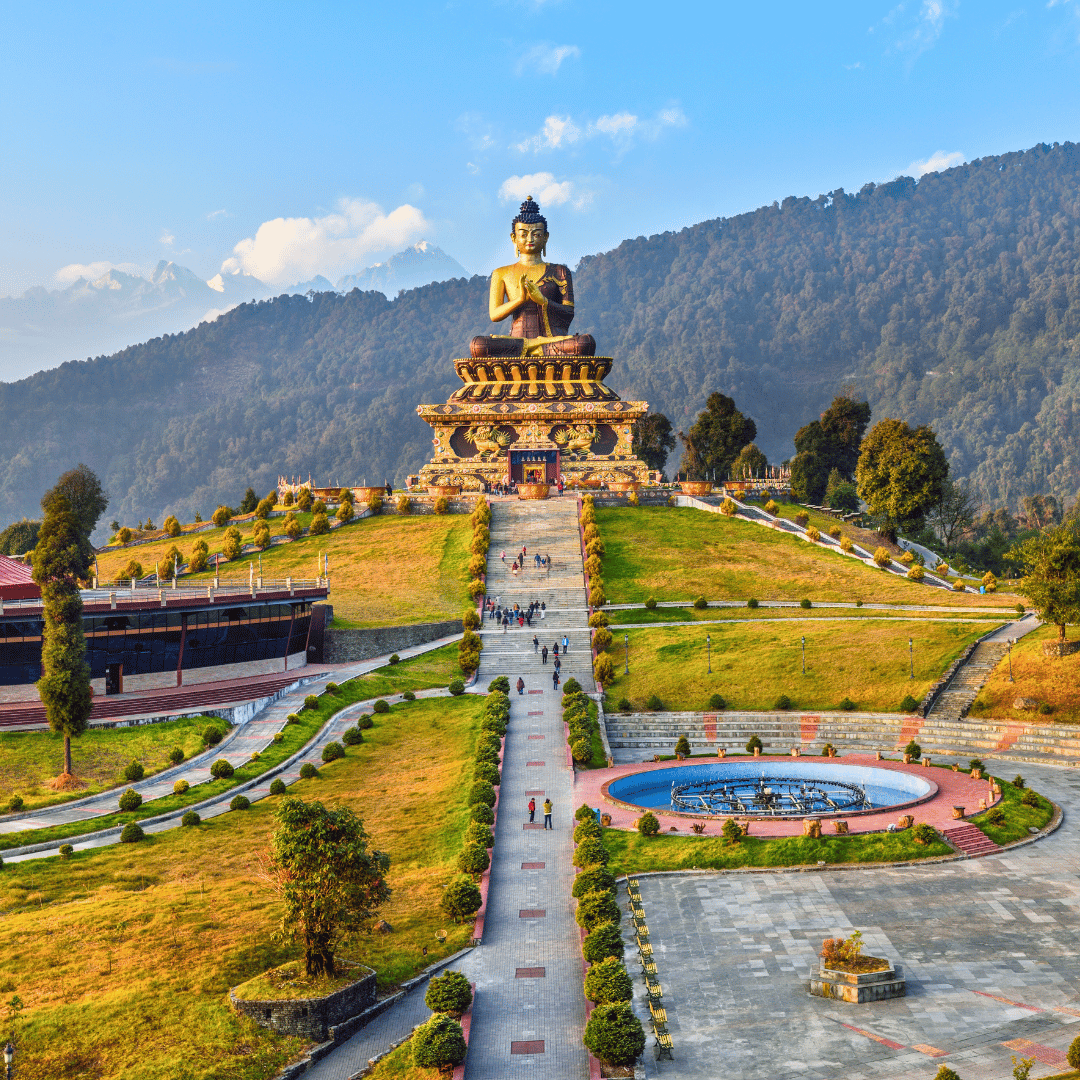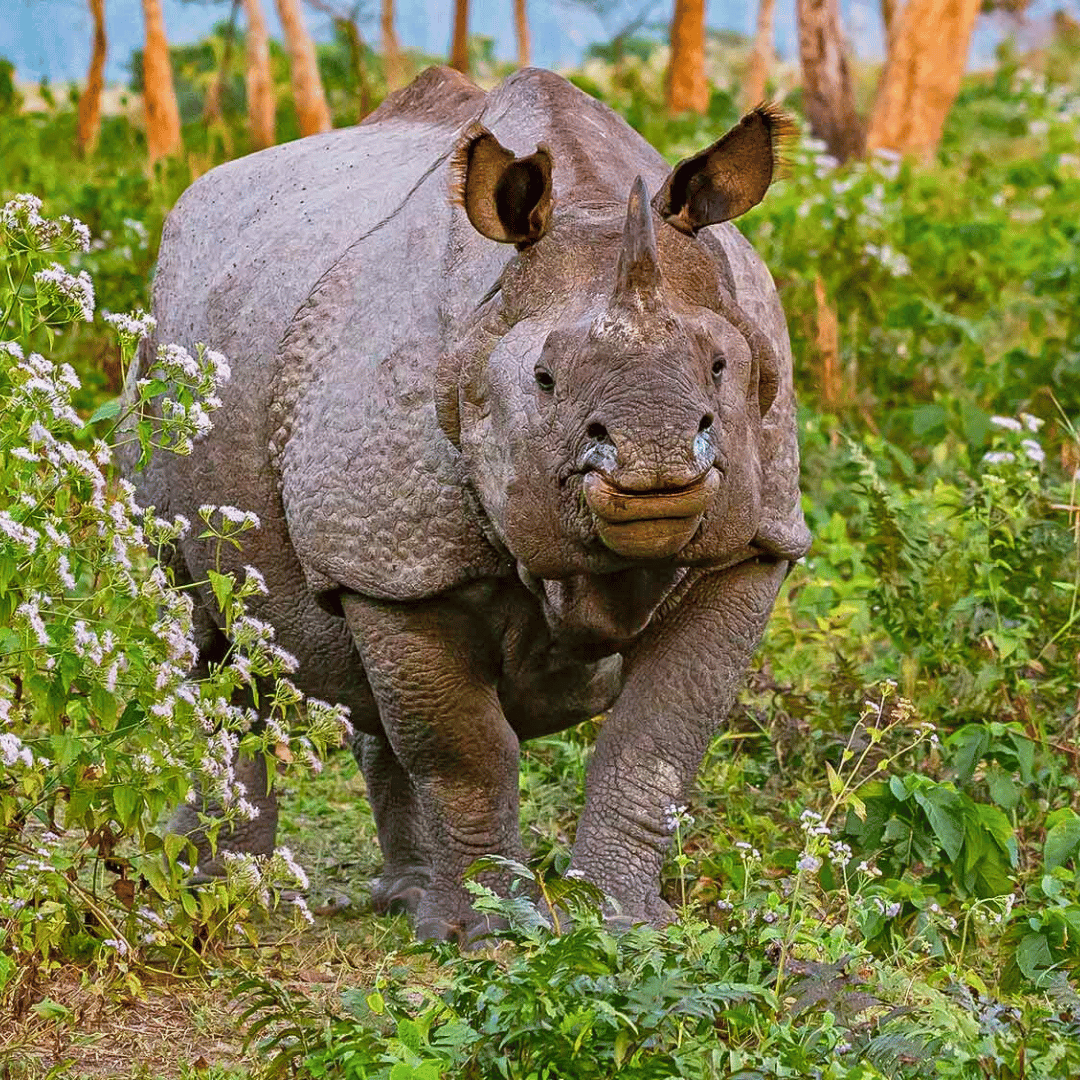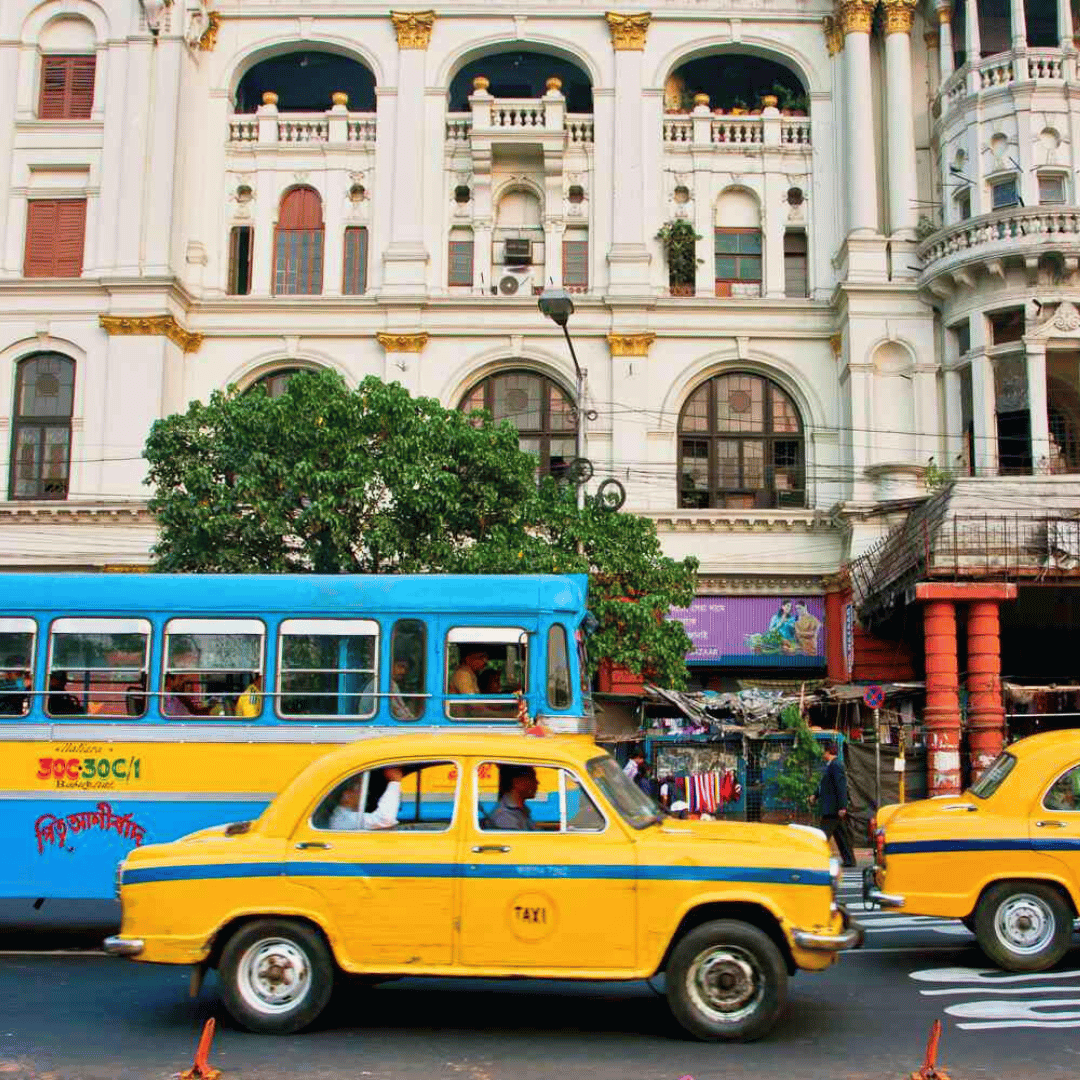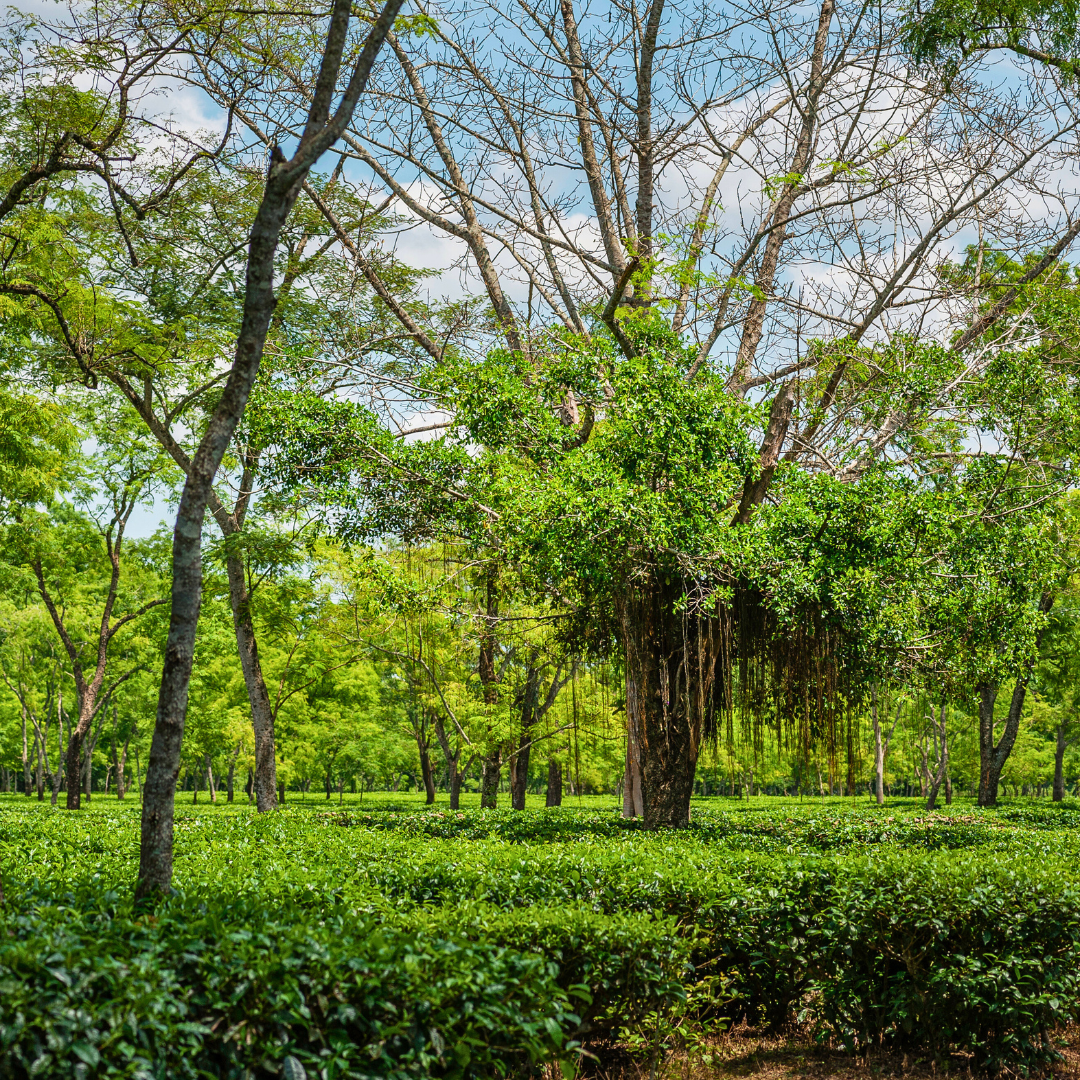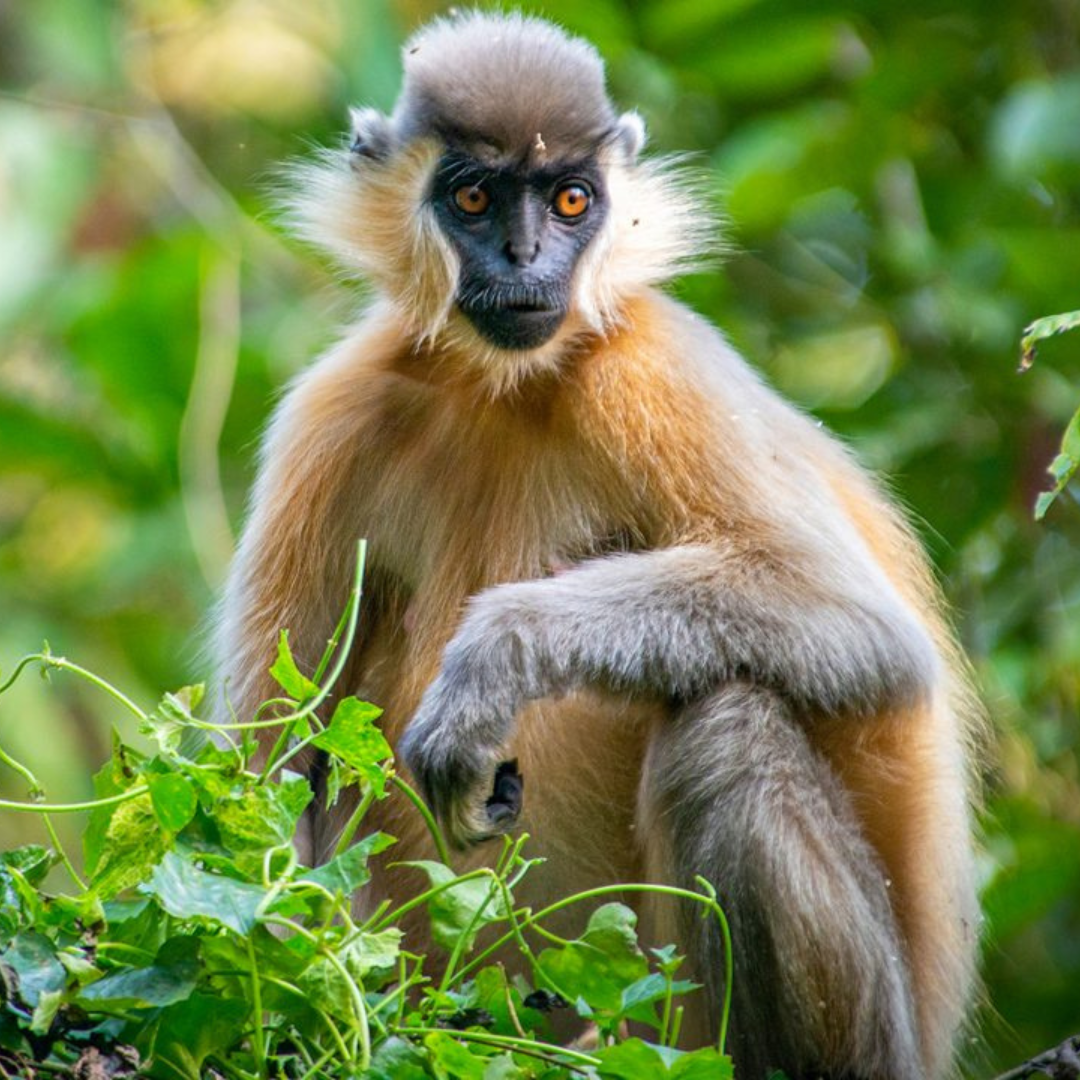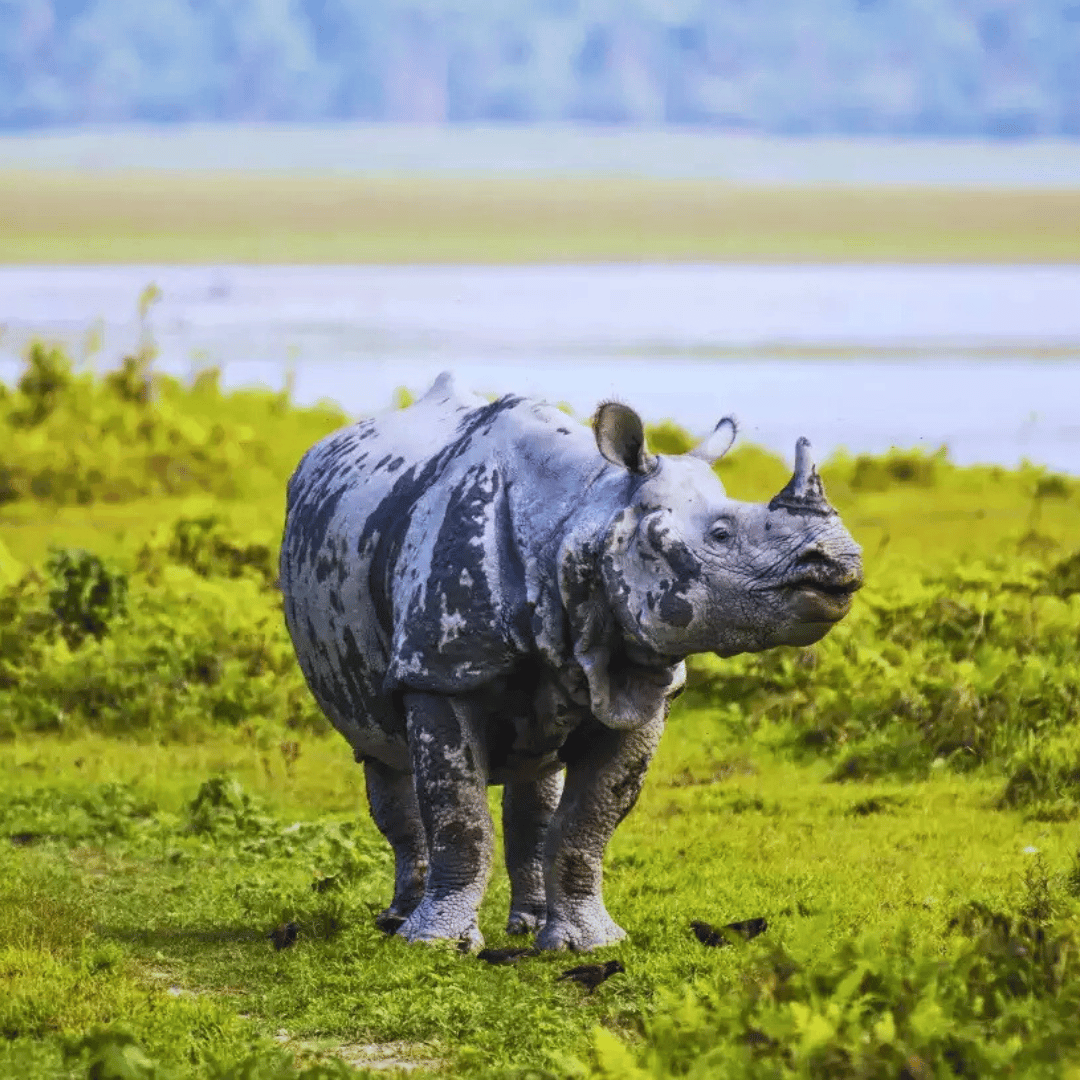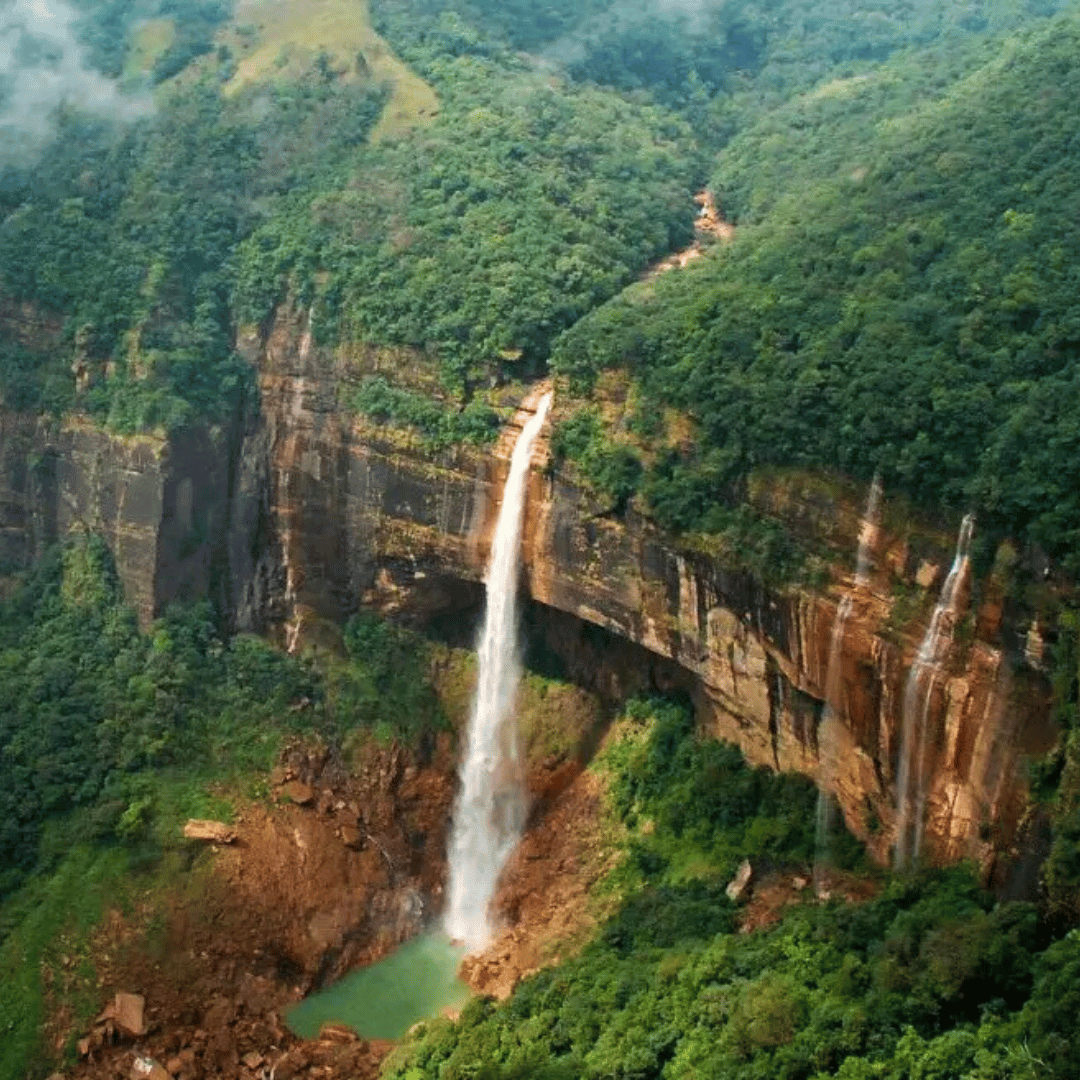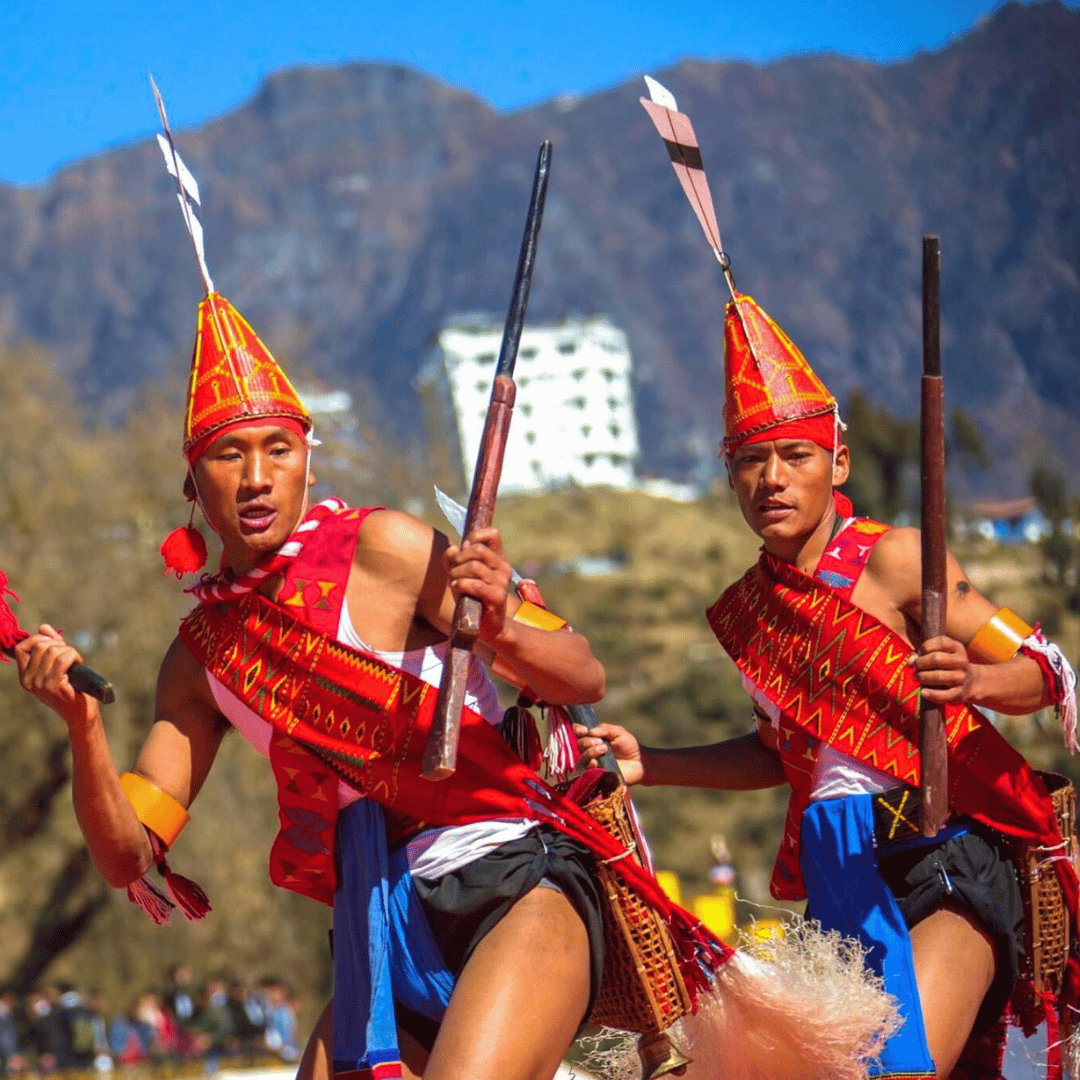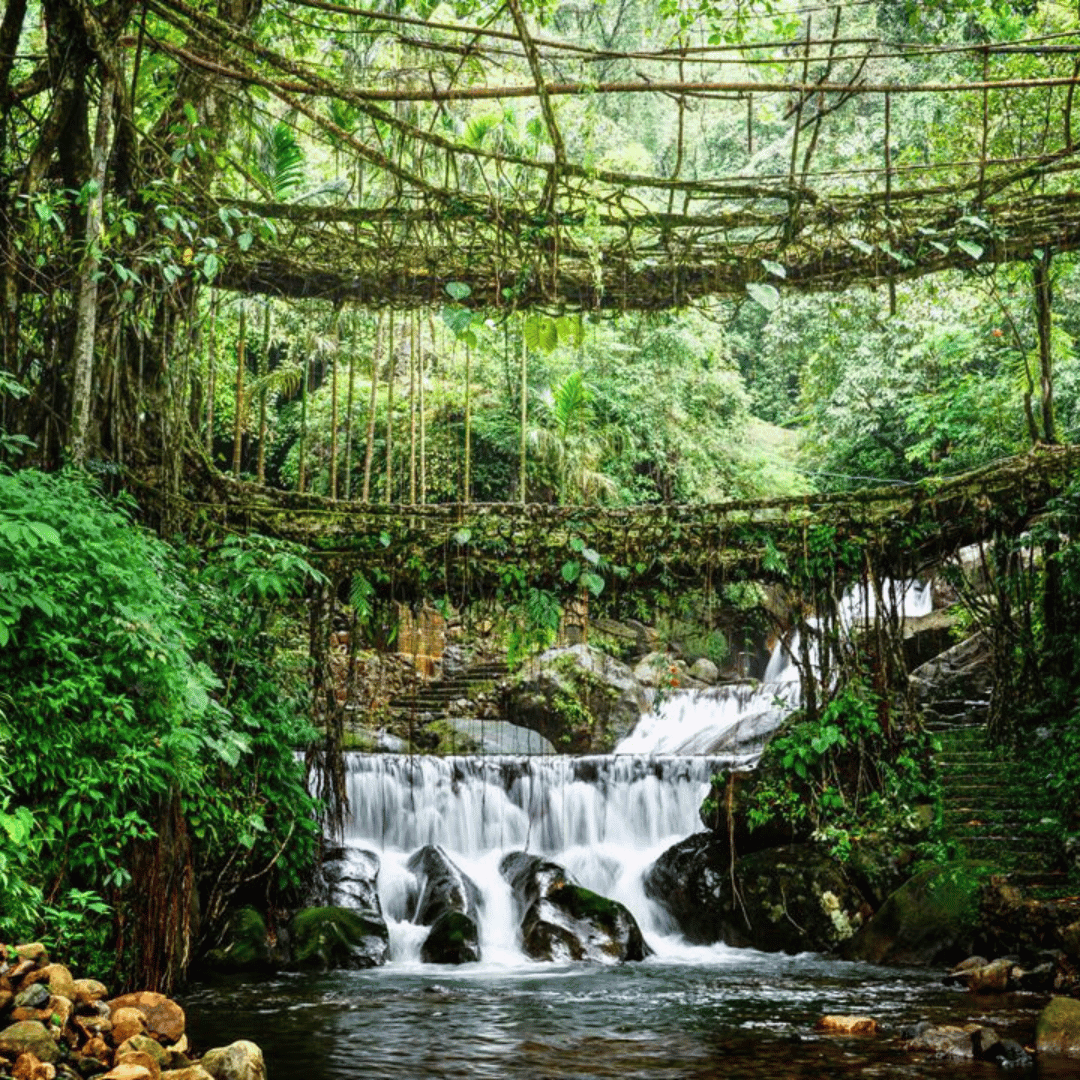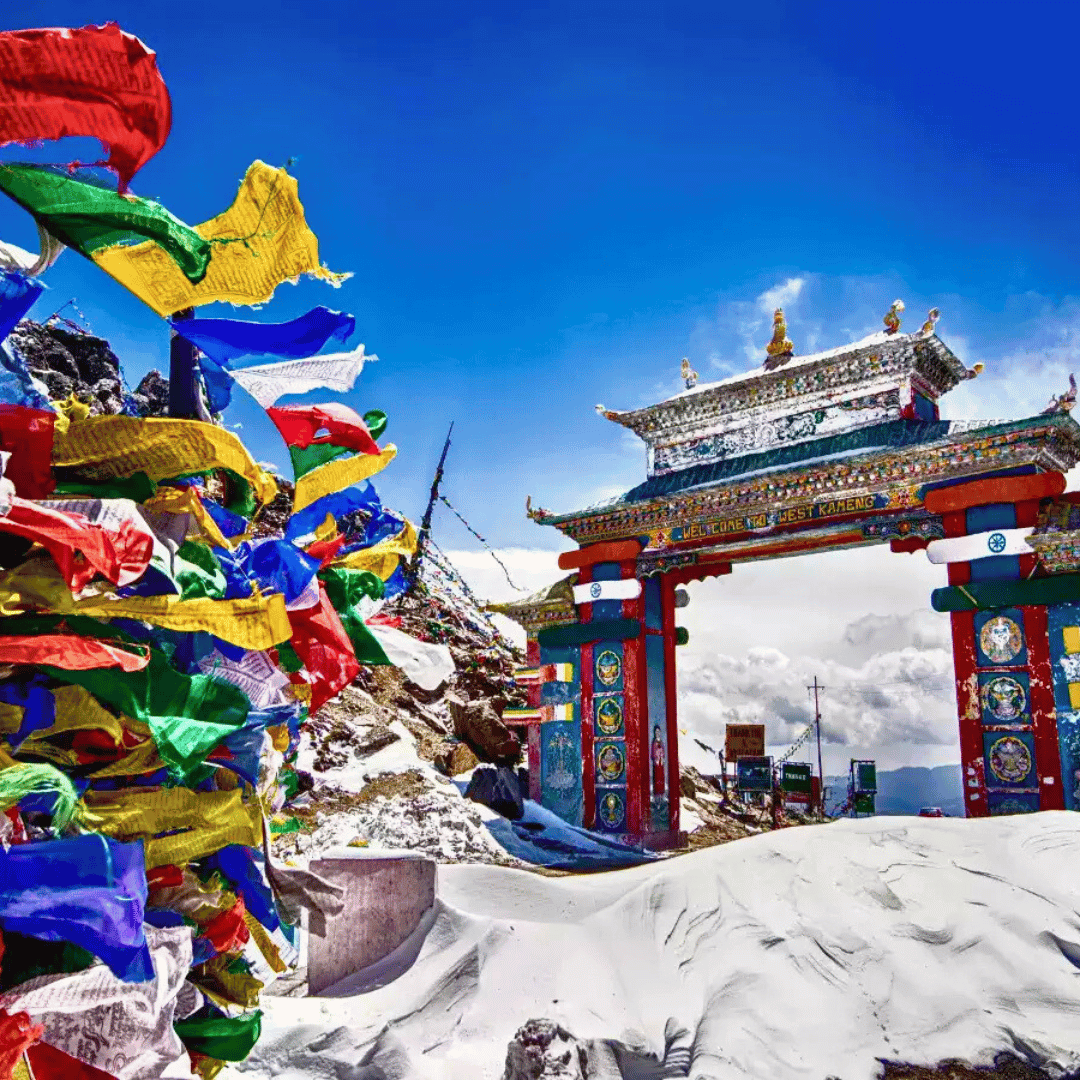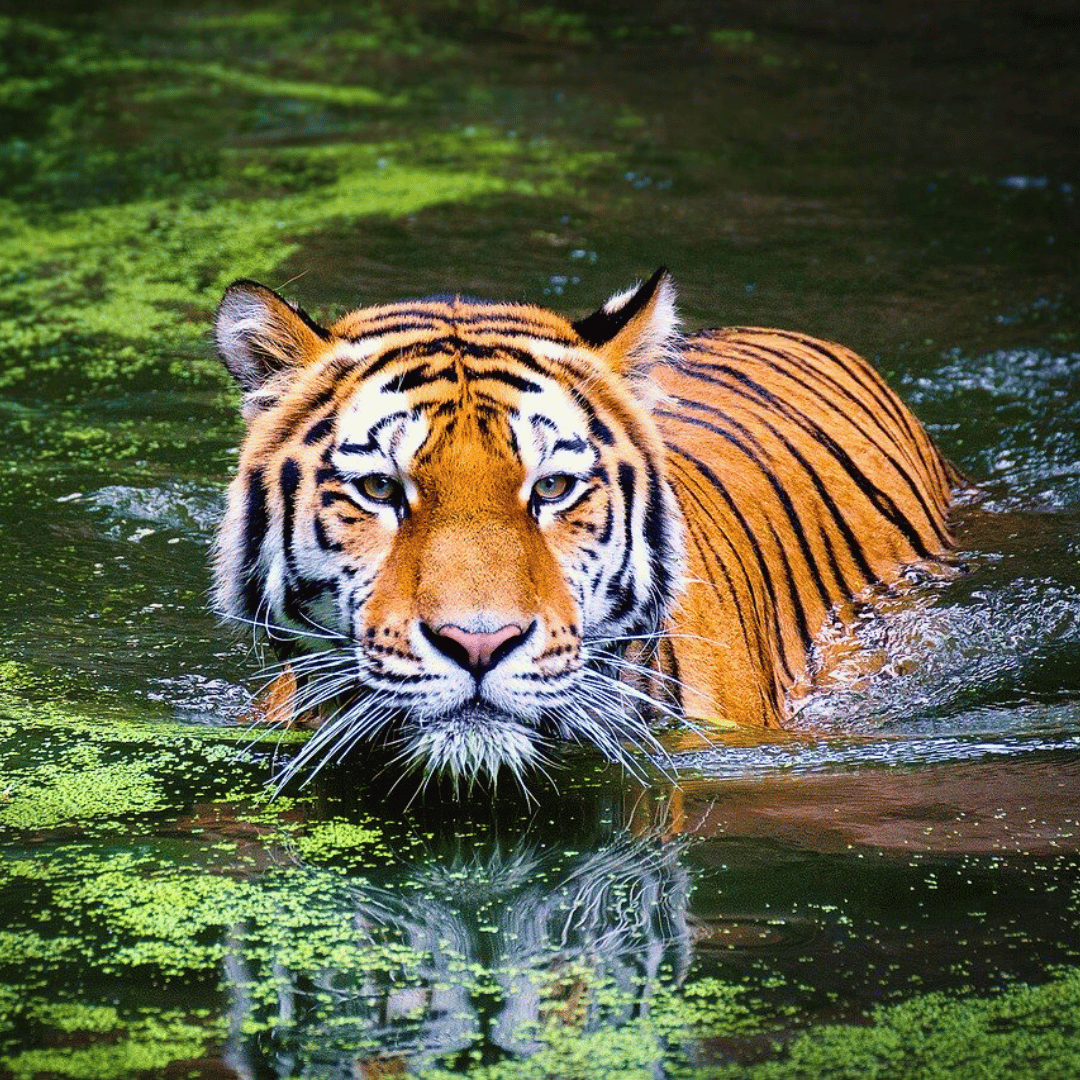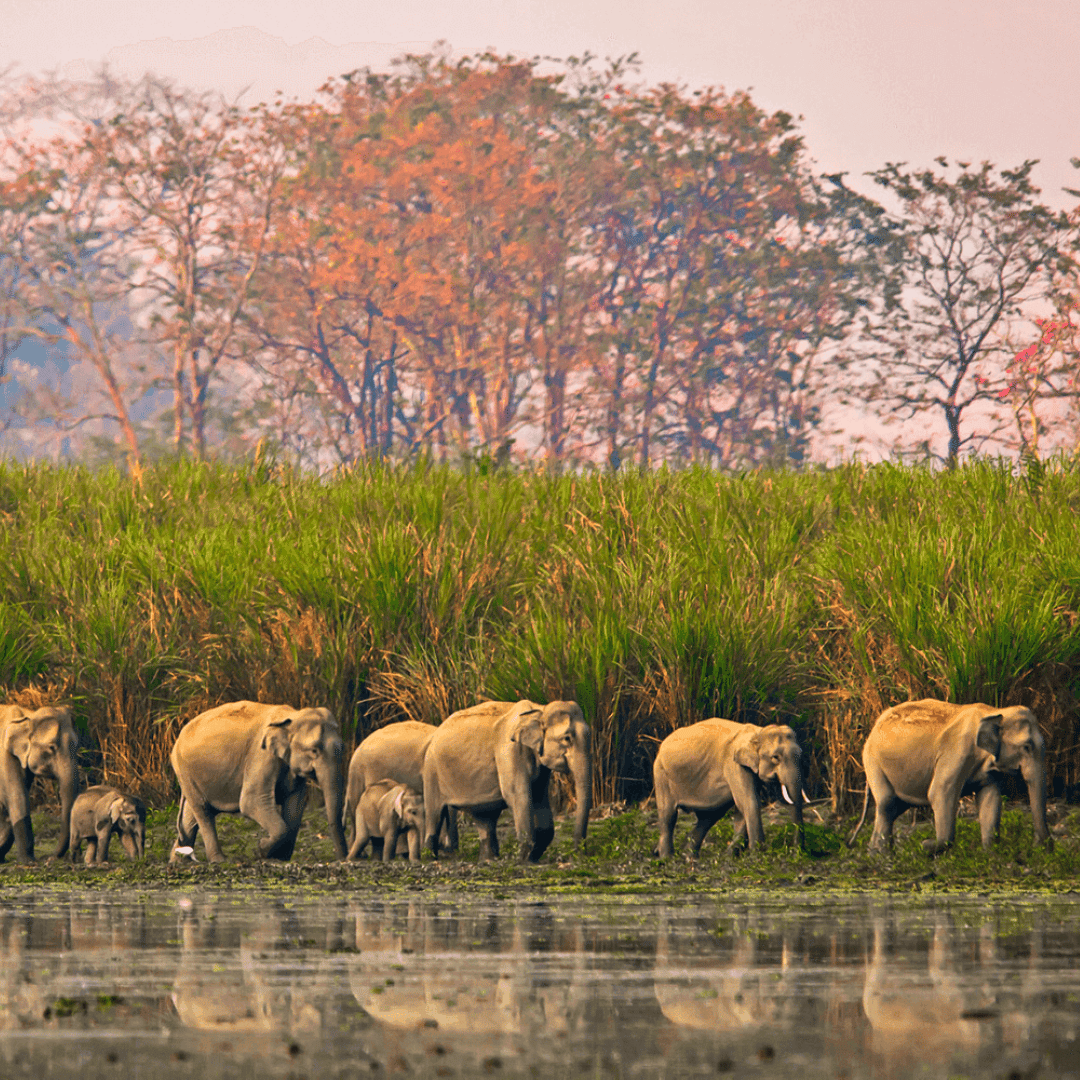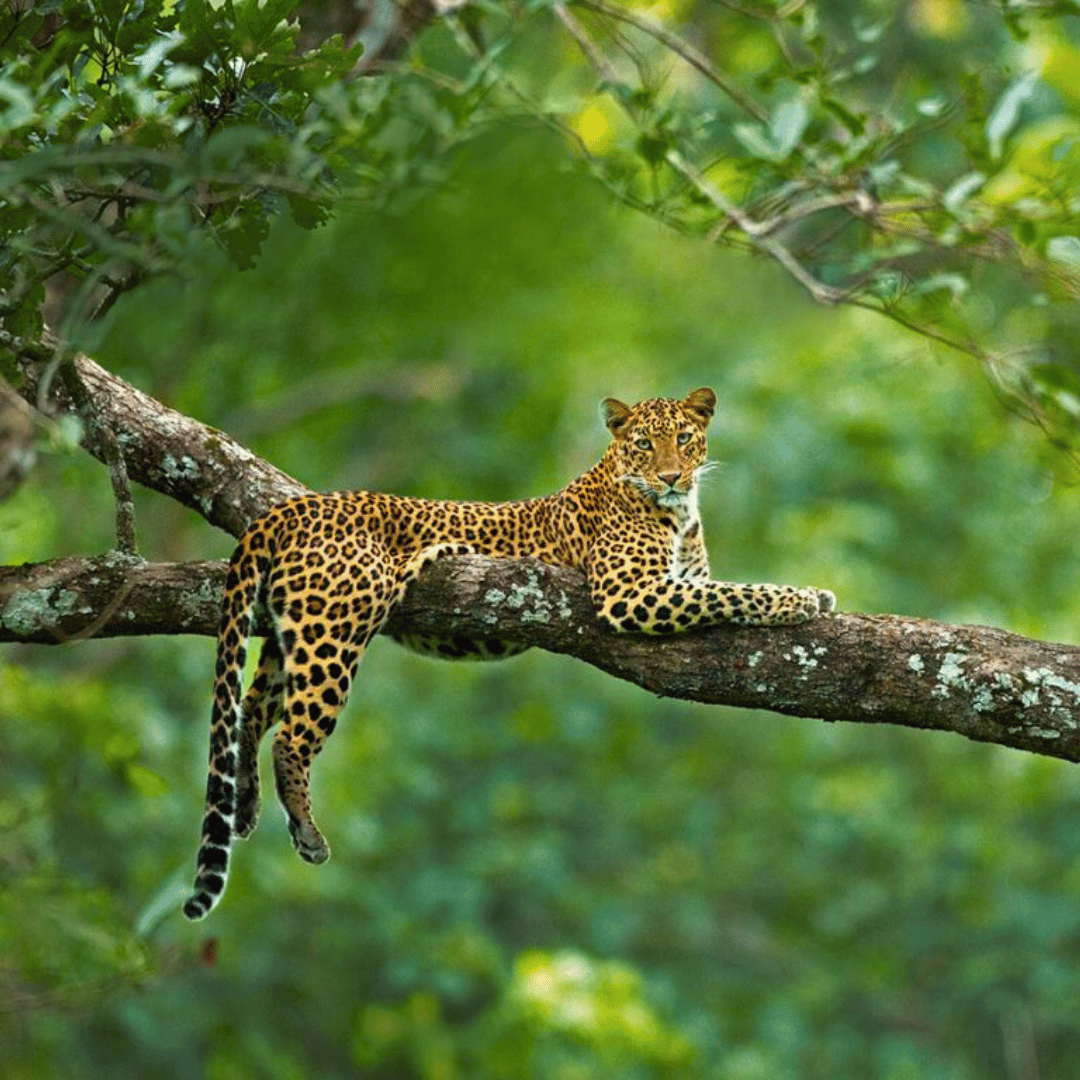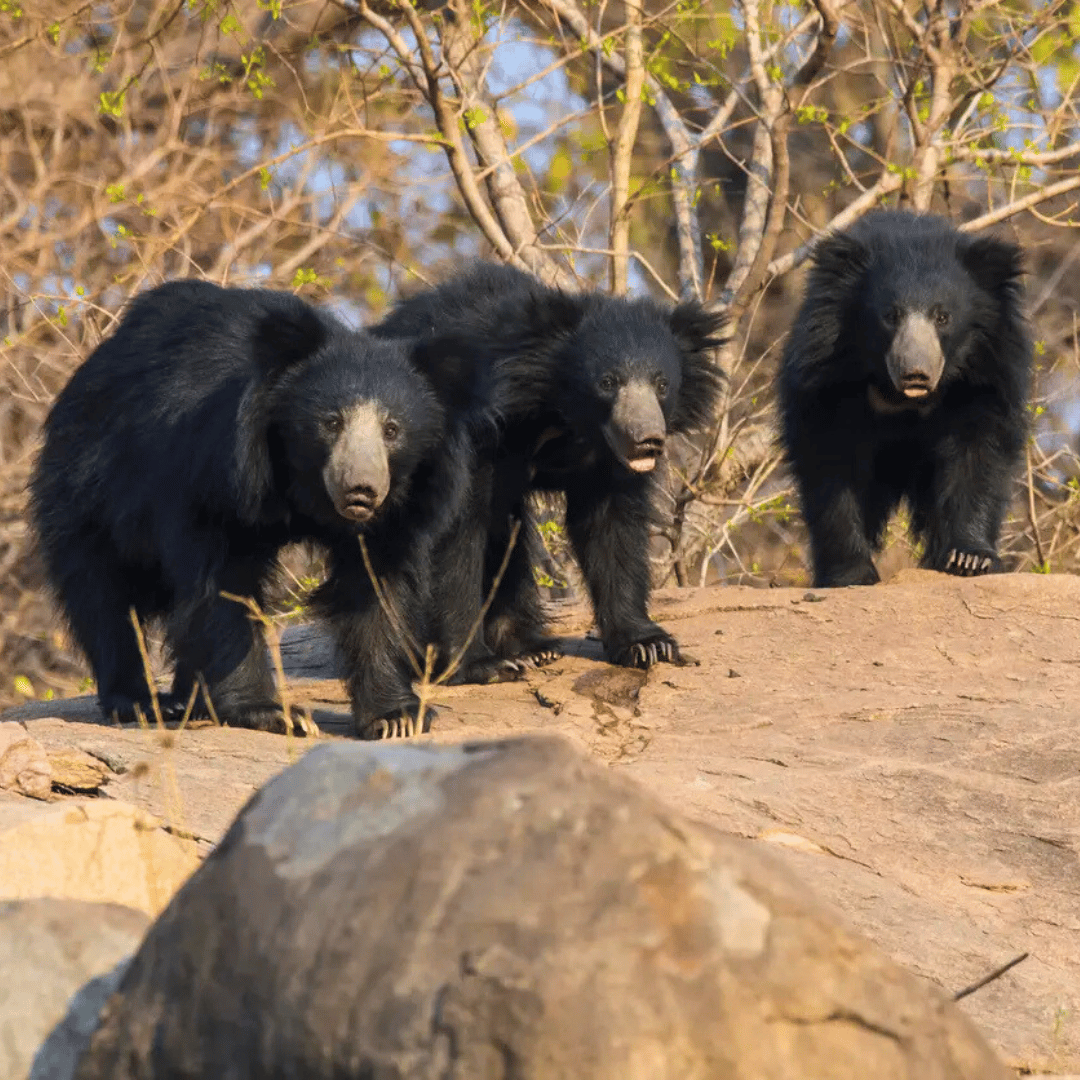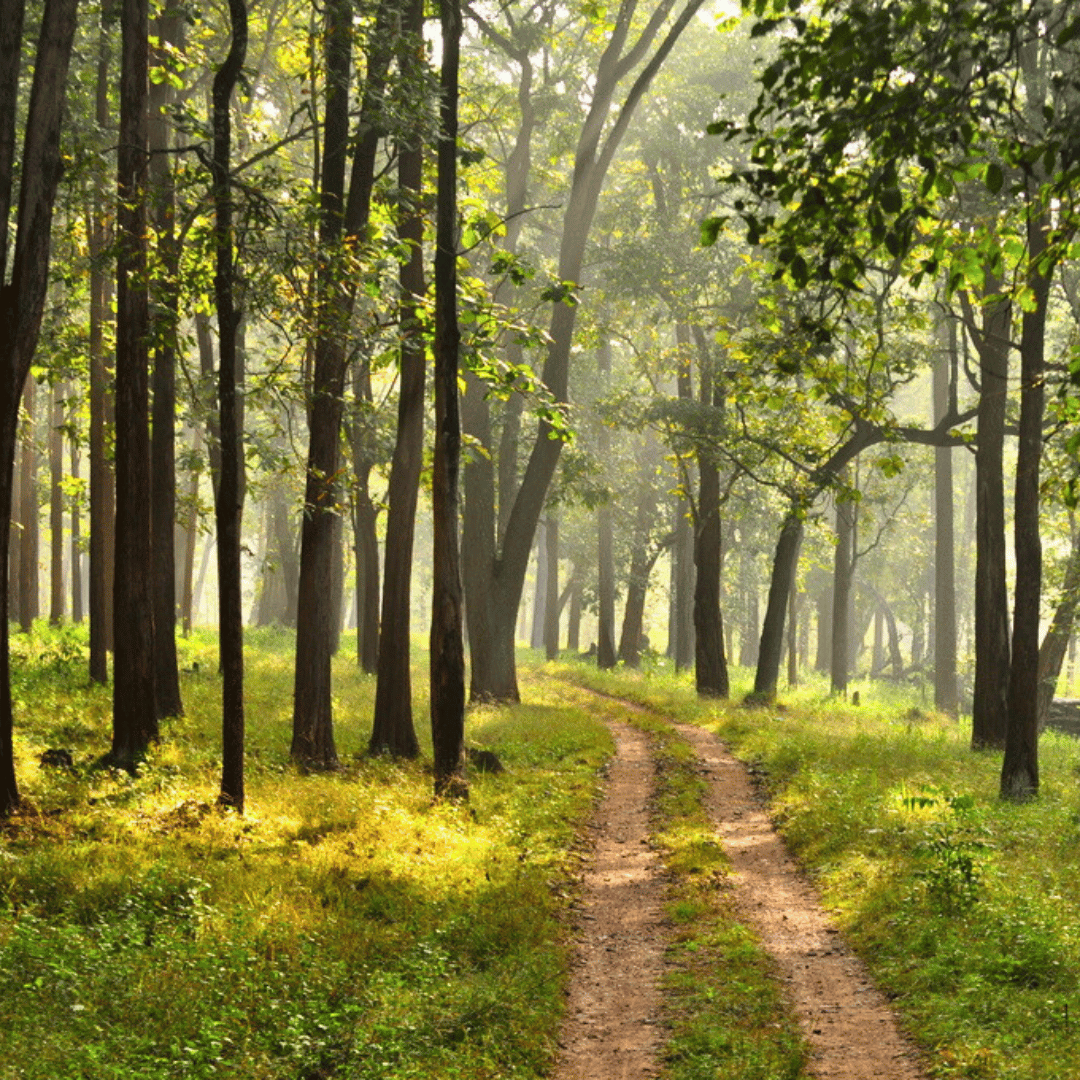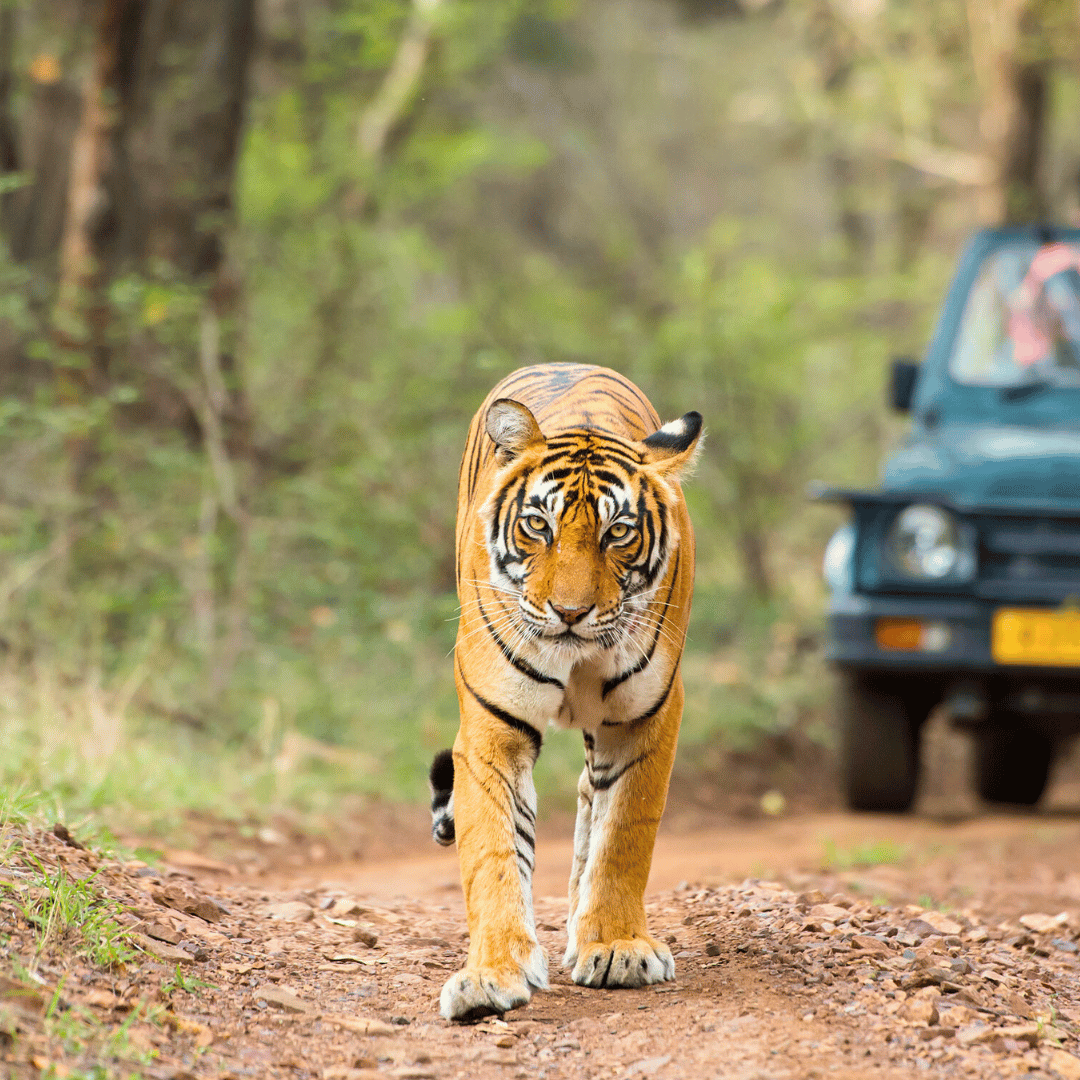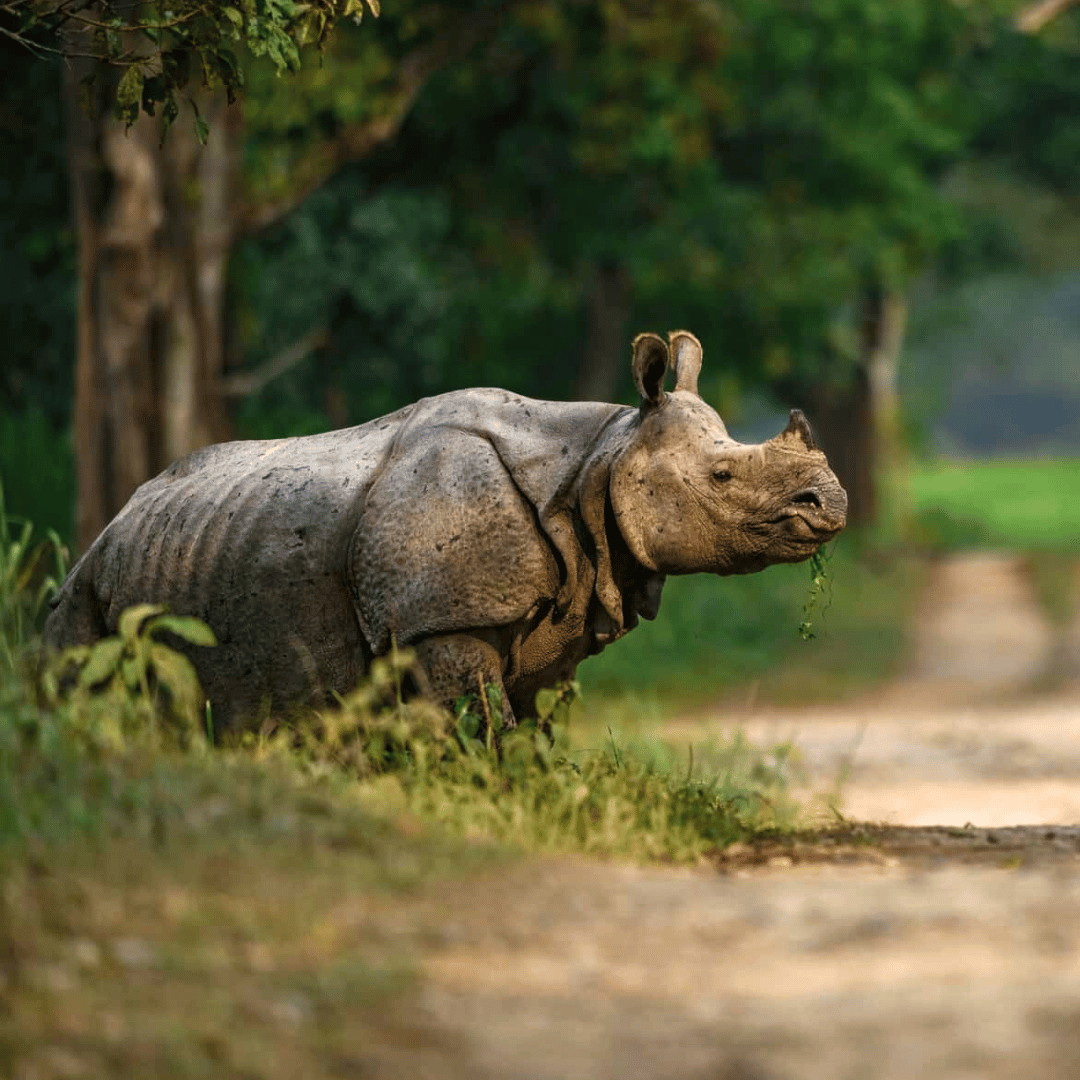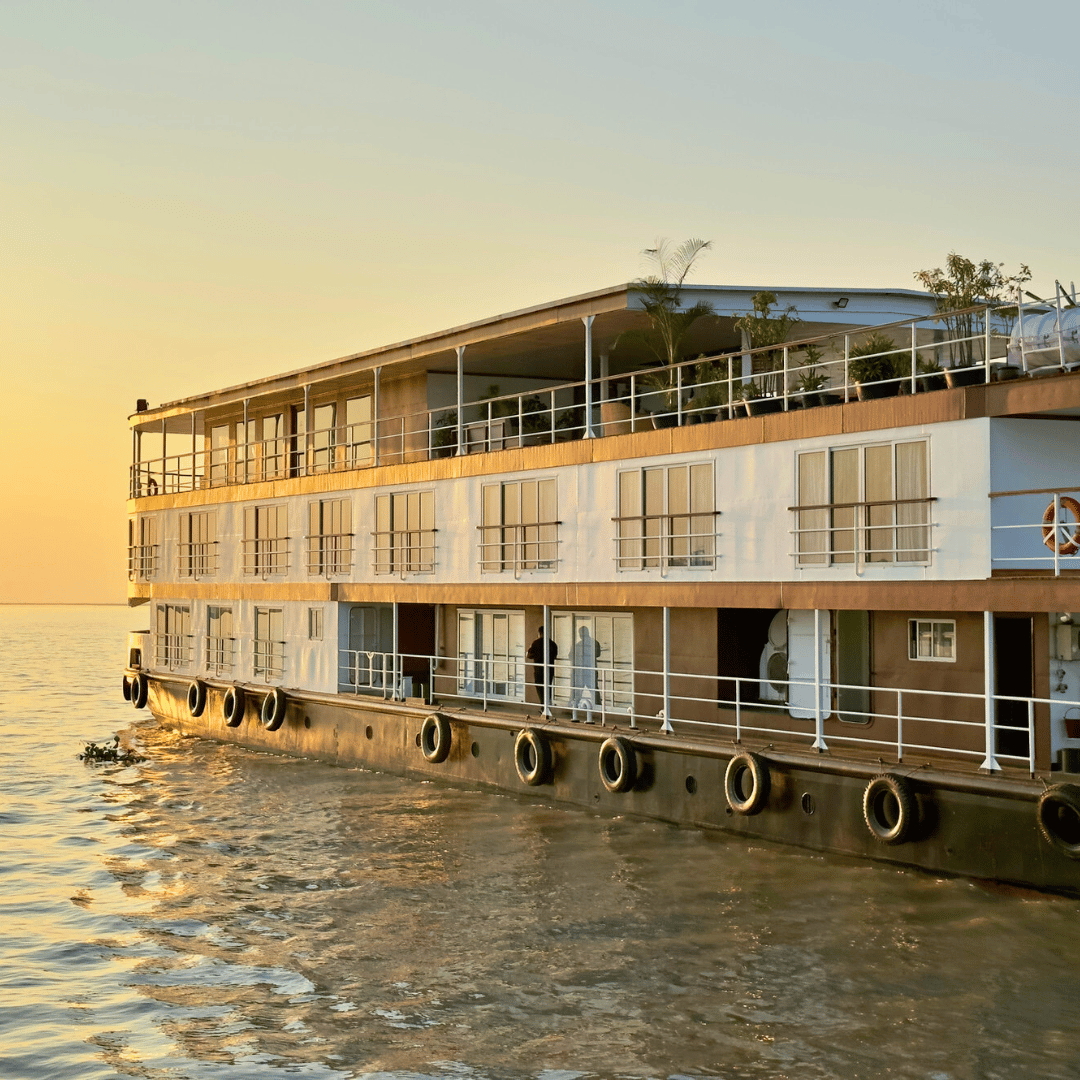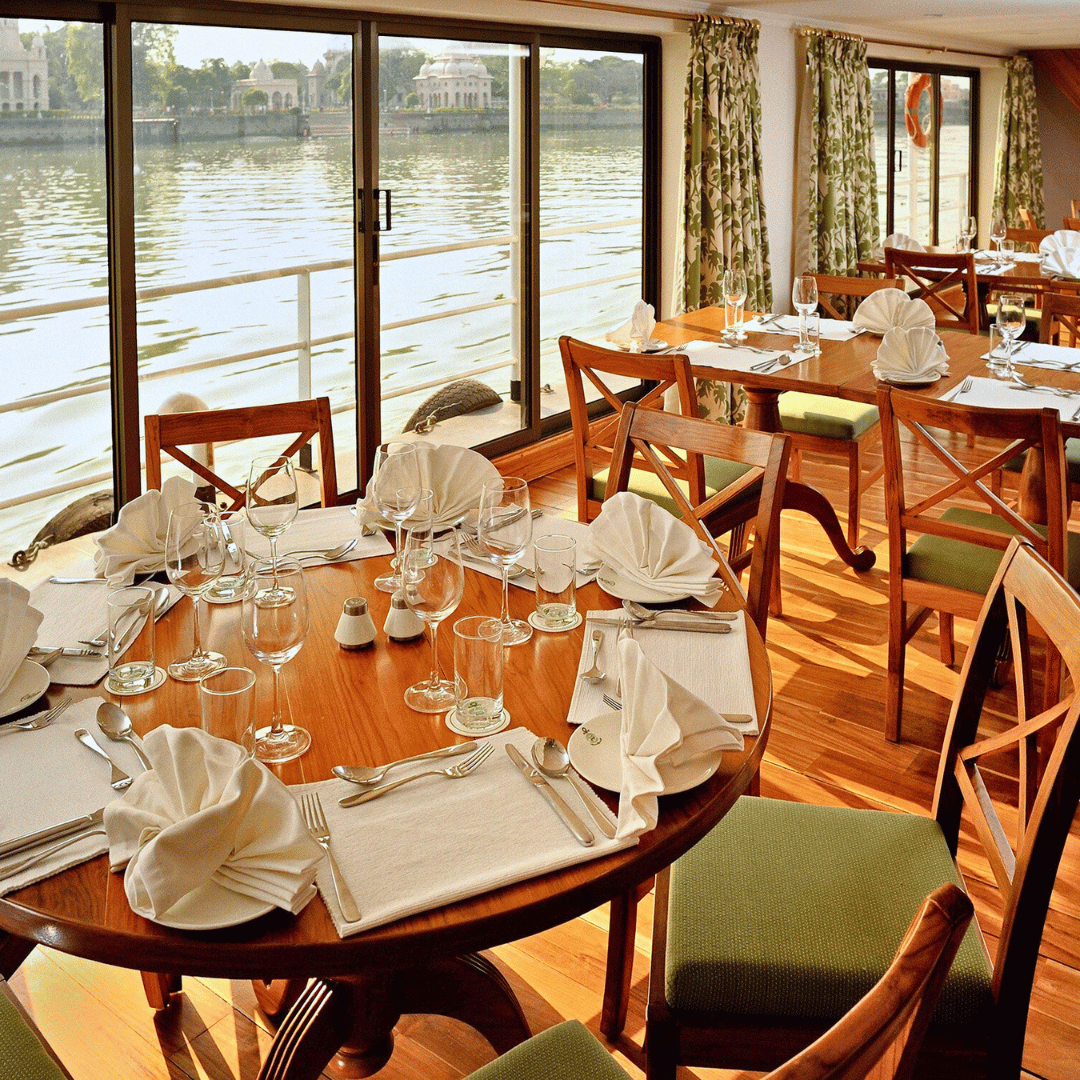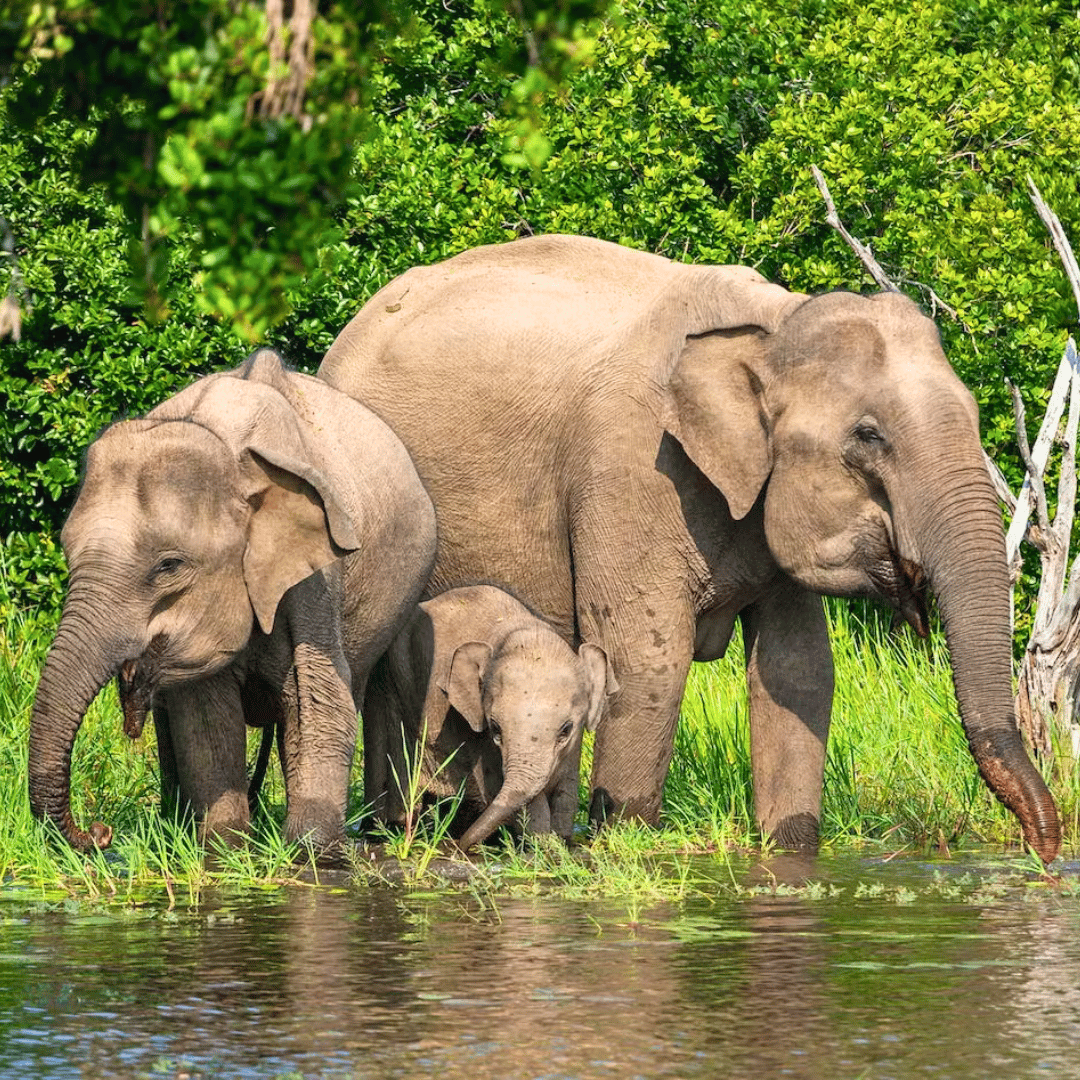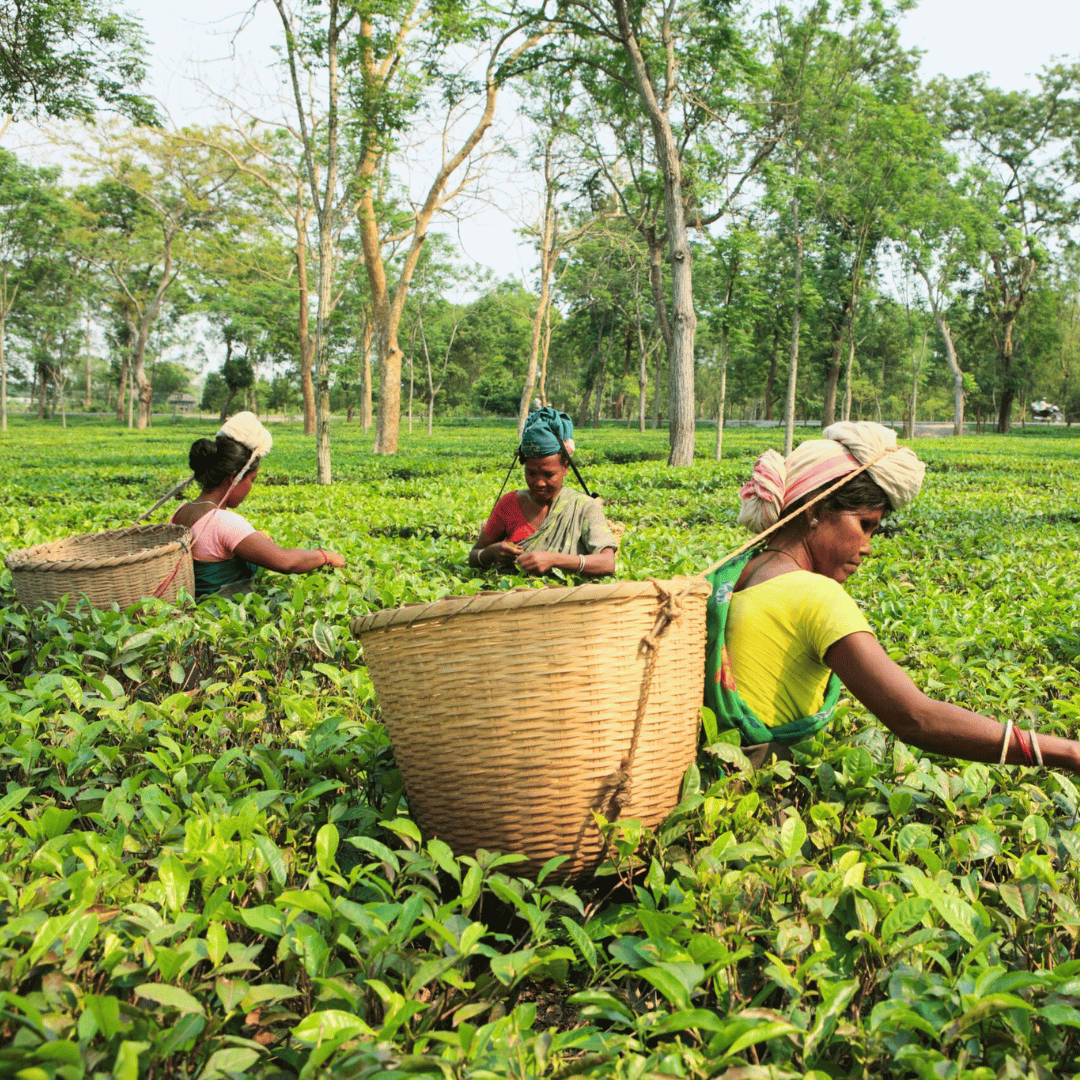North East In Depth Tour Itinerary
-
Welcome to North East India! Arrive at Guwahati Airport, where you will be met and transferred to Cherrapunjee, a journey of approximately four to five hours through the picturesque hills of Meghalaya. Known as the ‘abode of clouds’, this region is famed for receiving some of the highest rainfall in the world, creating a landscape of lush greenery, cascading waterfalls, and mist-covered valleys.
As you ascend into the Khasi Hills, you’ll notice the air become cooler and fresher, with the scenery transitioning from rolling plains to dense forests and deep gorges. Cherrapunjee, or Sohra, as it is locally known, is home to the Khasi people, one of Meghalaya’s indigenous matrilineal communities, who have lived in harmony with nature for centuries. Their spiritual traditions and environmental stewardship are reflected in the region’s sacred groves, protected forests that are considered ancestral sites and places of worship.
The landscape here is diverse and dramatic, with limestone caves, plunging waterfalls, and lush valleys carved by monsoon rains over millennia. Along the way, stop to take in the breathtaking views of the Surma Valley, which stretches across the Sylhet district of Bangladesh, offering a vast panorama of rice paddies and winding rivers below.
Cherrapunjee is also steeped in colonial history, with remnants of the Scottish presence still visible along the historic Scot’s Trail, once used by missionaries and traders who sought to establish links with the Khasi people. This combination of natural beauty, cultural richness, and historical significance makes Cherrapunjee a remarkable introduction to Meghalaya’s unique charm.
-
Begin your day exploring Cherrapunjee’s natural and cultural wonders, starting with a visit to its spectacular waterfalls. The region is home to some of India’s most dramatic cascades, fuelled by the area’s abundant rainfall and mist-covered cliffs. Among them, Nohkalikai Falls, one of the tallest plunging waterfalls in India, drops an astonishing 340 metres into a deep green pool below. Another highlight is Seven Sisters Falls, also known as Nohsngithiang Falls, where seven separate streams tumble down the rugged cliffs, offering breathtaking panoramic views.
After admiring the waterfalls, visit a traditional Khasi village, where you’ll have the chance to interact with the local community and gain insight into their unique matrilineal society. The Khasi people have a deep spiritual and ecological connection to their land, reflected in their sacred forests, age-old traditions, and remarkable bioengineering skills.
Later, embark on a scenic hike to one of Meghalaya’s famous Living Root Bridges. These incredible structures, grown rather than built, are made from the aerial roots of the Indian rubber tree, which are trained over decades to form strong, natural bridges across rivers and streams. Used by local villagers for centuries, these bridges are a testament to indigenous knowledge, environmental harmony, and sustainable engineering. Walking across one of these ancient, living structures, surrounded by dense rainforest and the sounds of nature, is a memorable and immersive experience.
After an early lunch, set off on a two-hour drive to Shillong, the bustling capital of Meghalaya, often referred to as the "Scotland of the East" for its rolling green hills and cool climate. On arrival, take some time for sightseeing, exploring the city’s colonial heritage, lively markets, and scenic viewpoints. You may visit Ward’s Lake, a serene artificial lake surrounded by manicured gardens and walking trails, or stop by the Don Bosco Museum, which provides a comprehensive insight into the diverse cultures, traditions, and tribes of Northeast India.
As evening falls, explore Shillong’s vibrant café scene, where you can enjoy freshly brewed local coffee, traditional Khasi delicacies, or fusion dishes in one of the many trendy restaurants that reflect the city’s youthful energy and artistic flair.
-
This morning, set off on the seven-hour drive to Kaziranga National Park, travelling through a landscape that shifts from the rolling hills of Meghalaya to the fertile plains of Assam, passing tea plantations, villages, and rice fields along the way.
A UNESCO World Heritage Site, Kaziranga is considered one of India’s best-managed national parks and is home to the largest population of the endangered one-horned rhinoceros. It also shelters the Asiatic wild water buffalo, Bengal tiger, Asiatic elephant, and swamp deer, making it one of the last places in Asia where these species coexist in the wild. Covering more than 850 square kilometres, the park’s diverse terrain includes floodplains, dense forests, tall grasslands, and wetlands, supporting a variety of wildlife.
Kaziranga is also known for its birdlife, with more than 480 species recorded, including the great hornbill, Pallas’s fish eagle, and Bengal florican. Reptiles such as the Indian rock python, monitor lizard, and the endangered gharial crocodile can sometimes be seen along the riverbanks.
On arrival, check in to your accommodation and take the rest of the day to relax, surrounded by the sounds of the jungle, in preparation for the wildlife safari that awaits tomorrow.
-
Spend the day exploring Kaziranga National Park on both morning and afternoon game drives in an open-top 4x4 jeep, offering a spectacular way to experience the park’s diverse landscapes and wildlife. Accompanied by an experienced guide and a knowledgeable park ranger, these safaris provide insight into Kaziranga’s delicate ecosystem, conservation efforts, and the behaviours of its remarkable wildlife.
The morning safari begins early, when the park is at its most peaceful and wildlife activity is high. As the mist lifts from the floodplains, there is a good chance of spotting herds of swamp deer grazing in the tall grass, elephants moving through the forest, and one-horned rhinoceroses emerging from the wetlands. Early mornings are also ideal for birdwatching, with a variety of species - including the great hornbill, kingfishers, and Pallas’s fish eagle - actively feeding.
In the afternoon, set out for a second game drive, exploring a different zone of the park. This is when larger mammals such as wild water buffalo and herds of elephants are often seen moving towards water sources. The vast grasslands also provide an opportunity to spot Kaziranga’s elusive predators, including the Bengal tiger and leopard, though they remain well-camouflaged and sightings are rare. The changing light of the late afternoon adds to the experience, casting a warm glow over the park’s landscapes.
Kaziranga’s ecosystem, shaped by the annual flooding of the Brahmaputra River, supports an incredible variety of flora and fauna, making every game drive a unique experience. Returning to your accommodation in the evening, enjoy the chance to relax and reflect on the day’s wildlife encounters, surrounded by the sounds of the jungle.
-
After breakfast, depart for the three-hour drive to Pakke Tiger Reserve, located in the western region of Arunachal Pradesh. The journey takes you through changing landscapes, from the fertile floodplains of Assam into the lush, forested foothills of the Eastern Himalayas, where Pakke’s dense tropical forests remain one of India’s most pristine ecosystems.
Pakke Tiger Reserve is home to the Nyishi people, an indigenous community with a deep-rooted culture and strong traditions. Historically, the Nyishis hunted hornbills, using their distinctive beaks and feathers to adorn their traditional headgear. However, over the years, conservation efforts and community-led initiatives have led to a complete ban on hunting near the reserve, making Pakke one of the best places in India to observe these majestic birds in the wild.
The reserve is known as Hornbill country, with four species of hornbills thriving in its forests - the great hornbill, wreathed hornbill, oriental pied hornbill, and rufous-necked hornbill. These birds play a crucial role in the forest ecosystem as seed dispersers, helping maintain the health of the jungle. Pakke is also home to a variety of mammals, including tigers, leopards, clouded leopards, elephants, gibbons, and barking deer, as well as more than 300 species of birds.
In the afternoon, set out on a guided trek with a former hunter turned conservationist, who will provide a rare perspective on the region’s wildlife and traditional survival skills. Walking through thick forests, bamboo groves, and streams, your guide will demonstrate tracking techniques, explain medicinal plants, and share stories of the Nyishi way of life, offering an authentic insight into the deep connection between the community and the land.
As evening falls, return to your forest lodge or eco-camp, where the sounds of crickets, rustling leaves, and distant bird calls create a truly immersive experience in this untouched wilderness.
-
Spend the day exploring Pakke Tiger Reserve through a combination of a jeep safari and a guided walk, offering opportunities to experience the rich biodiversity and pristine landscapes of this lesser-visited wilderness.
Begin the day with a morning jeep safari, venturing deep into the dense forests and open grasslands of the reserve. The safari allows you to cover a larger area, increasing your chances of spotting larger mammals such as elephants, barking deer, clouded leopards, and even the elusive Bengal tiger. Keep an eye out for arboreal species like gibbons swinging through the trees, as well as hornbills, whose distinctive calls echo through the jungle. The changing light of the morning highlights the lush greenery, towering trees, and winding rivers that shape this unique ecosystem.
Later in the day, take a guided walk through the forest, accompanied by a local naturalist and tracker. Walking through Pakke allows for a closer look at the flora and smaller wildlife, such as colourful butterflies, rare orchids, and medicinal plants used by the Nyishi community. Your guide will point out animal tracks, signs of nocturnal activity, and nesting sites for birds, deepening your understanding of the delicate balance that sustains this environment.
As evening approaches, return to your forest lodge or eco-camp, where a special cultural performance by Nyishi folk artists awaits. The Nyishi people, the largest ethnic group in Arunachal Pradesh, have a vibrant cultural heritage, reflected in their music, dance, and storytelling traditions. Enjoy an energetic and rhythmic dance performance, accompanied by traditional drums and folk songs, which narrate tales of bravery, nature, and daily life in the hills.
This evening offers a rare opportunity to engage with the local community, gaining insight into their traditions, conservation efforts, and deep connection with the natural world.
-
Today, set off on a scenic seven-hour drive to Ziro, a picturesque valley set on the great Apatani plateau. The journey takes you through dense forests, winding mountain roads, and small tribal villages, offering glimpses of rural life and the untouched landscapes of Arunachal Pradesh. As you ascend into the valley, the terrain opens up to reveal lush rice fields, bamboo groves, and traditional wooden houses that define the Apatani heartland.
The Apatani people are considered one of the most settled and progressive indigenous tribes of Arunachal Pradesh, having shifted from a hunter-gatherer lifestyle to a highly efficient and sustainable agricultural system. They cultivate rice using a unique irrigation technique, integrating fish farming within their paddy fields to maintain a self-sustaining ecosystem. This age-old farming practice, passed down through generations, ensures that the land remains fertile and productive without the use of modern machinery or fertilisers. The River Subansiri, which flows through the valley, plays a vital role in supporting their agricultural and spiritual life.
The Apatanis’ way of life is deeply intertwined with nature, and they follow a strict conservationist approach. For every tree felled, they plant five saplings, ensuring that their forests remain lush and abundant for future generations. This commitment to sustainability extends to their traditional crafts, including weaving, bamboo work, and wood carving, which they continue to preserve despite external influences.
The Apatani valley has been shortlisted as a future UNESCO World Heritage Site, not only for its unique cultural and agricultural practices but also for the distinct identity of its people. Apatani women, in particular, have a recognisable appearance, traditionally wearing facial tattoos and nose plugs, a custom that dates back centuries. Though the practice has faded among younger generations, it remains a symbol of Apatani heritage.
On arrival in Ziro, settle into your accommodation and take in the serene surroundings of the valley, preparing to explore the culture, landscapes, and traditions of the Apatani people in the coming days.
-
Spend the day exploring the Apatani villages of Ziro, immersing yourself in their unique traditions, agricultural practices, and way of life. Accompanied by a local guide, gain insight into the daily rhythms of the Apatani people, who have preserved their centuries-old customs while adapting to modern influences.
Start with a visit to a traditional Apatani village, where you’ll notice the distinctive architecture of their homes. Built on raised bamboo platforms with thatched roofs, these houses are constructed using local materials such as bamboo, cane, and pinewood, reflecting the community’s deep respect for nature. Strolling through the village, you’ll see locals going about their daily activities, from hand-weaving intricate textiles to carving bamboo for crafts and household items.
Continue to the bustling local market, where villagers trade fresh produce, handmade goods, and textiles. The market offers a great opportunity to interact with locals and sample traditional Apatani delicacies, including rice-based snacks, bamboo shoot dishes, and fermented foods that are integral to their cuisine.
A visit to an Apatani paddy field provides an understanding of their unique and sustainable farming techniques. The Apatanis have perfected a highly efficient system of rice cultivation, integrating fish farming within the same fields. This method allows them to grow crops without the need for chemical fertilisers, as the fish help control pests while enriching the soil. Unlike other hill tribes who practice shifting cultivation, the Apatanis have relied on this permanent, irrigated farming system for generations, making them one of the most agriculturally advanced indigenous groups in the region.
Next, visit a bamboo plantation, where you’ll see how bamboo is cultivated, harvested, and used for construction, handicrafts, and daily life. Bamboo plays an essential role in Apatani culture, used for everything from house-building and fences to baskets, utensils, and even bridges. The Apatanis’ sustainable harvesting methods ensure that forests remain healthy and productive, reflecting their longstanding commitment to conservation.
As you explore, your guide will also share stories about the unique traditions of the Apatani people, including their spiritual beliefs, nature-worship practices, and local festivals. The Apatanis follow Donyi-Polo, a belief system that reveres the sun and moon as deities, and their villages contain sacred groves and altars where traditional ceremonies and rituals are performed.
Returning to your accommodation in the afternoon, take some time to relax and absorb the peaceful atmosphere of the valley, reflecting on the rich cultural heritage and sustainable way of life of the Apatani people.
-
Set off on the six-hour drive to Daporijo, a remote town nestled in the Upper Subansiri district of Arunachal Pradesh, known for its diverse tribal communities, dense forests, and rugged hills. The journey takes you through scenic valleys, river crossings, and forested landscapes, offering glimpses of rural life and the untouched beauty of this lesser-visited region.
Daporijo is home to the Tagin and Hill Miri tribes, two of Arunachal Pradesh’s many indigenous groups, each with their own distinct customs, dialects, and traditions. The Tagin people, who form the majority here, are believed to have migrated from Tibet centuries ago. They primarily follow Donyi-Polo, a spiritual belief system centred around the worship of the sun (Donyi) and moon (Polo), though some have also embraced Tibetan Buddhism and Christianity. The Hill Miri tribe, originally from the lower Subansiri region, have their own rich oral traditions, rituals, and agricultural practices.
On arrival, continue to Rigu village, where you will stay amongst the Adi Gallong, Hill Miri, and Tagin tribes, gaining a rare insight into their way of life, customs, and daily routines. The Adi Gallong people, a subgroup of the larger Adi tribe, are known for their weaving, woodcraft, and traditional longhouses, built on stilts with thatched roofs to withstand the region’s climate.
Spend time observing and interacting with the villagers, learning about their farming techniques, fishing practices, and handloom weaving. The community here is self-sufficient, relying on shifting cultivation, bamboo work, and hunting to sustain their lifestyle. The local rice beer, brewed at home using fermented millet or rice, plays a key role in social gatherings and festivals.
Take a guided walk through the village, where you may see women weaving intricate fabrics on backstrap looms, men carving wood for house construction and tool-making, and elders narrating folk stories and myths that have been passed down through generations. The evening provides an opportunity to gather around a fire, sharing conversations with your hosts and experiencing the warmth of their hospitality.
-
Set off this morning on a five-hour drive to Along (Aalo), a scenic town in the West Siang district of Arunachal Pradesh, surrounded by forested hills, terraced fields, and winding rivers. The journey takes you through remote countryside, where you may see traditional bamboo houses, farmers tending to their fields, and locals walking along winding paths that connect scattered villages.
On arrival in Along, continue your journey further to Wakh village, home to the Adi Gallong tribal community. The Adi Gallong people, a subgroup of the larger Adi tribe, are known for their strong community bonds, traditional longhouses, and deep connection to nature. Their settlements are typically built on hillsides or riverbanks, with houses constructed from bamboo and cane, designed to withstand the region’s changing weather conditions.
Spend time mingling with the villagers, gaining insight into their daily lives, traditions, and centuries-old customs. The Adi Gallong are skilled weavers and farmers, with agriculture forming the backbone of their economy. They practice shifting cultivation and wet rice farming, growing a variety of millets, vegetables, and fruits, while also engaging in fishing and hunting to supplement their diet.
You’ll have the opportunity to taste local Adi Gallong cuisine, prepared using freshly harvested ingredients and traditional cooking techniques. Meals typically include fermented bamboo shoots, smoked meats, locally grown vegetables, and rice cooked in hollow bamboo tubes over an open fire. A highlight of the evening is sampling the local rice wine, Apong, which is brewed in bamboo containers and plays a significant role in social gatherings, festivals, and rituals.
-
Spend the day immersing yourself in the rhythms of village life, gaining a deeper understanding of the traditions, customs, and daily activities of the local Adi Gallong community. Walk through the village, where you’ll see traditional bamboo homes built on stilts, locals tending to their fields, and artisans engaged in weaving and woodwork, skills that have been passed down through generations. The Adi people take great pride in their self-sufficient lifestyle, growing their own food, fishing in nearby rivers, and crafting tools, baskets, and clothing from locally sourced materials.
As the day unfolds, you can choose to stay overnight in Along, where you can continue exploring the town and interacting with its residents, or opt for an adventurous journey to Komsing village, inhabited by the Adi Myniong tribe, an aboriginal subgroup of the Adi people.
For those who choose the Komsing option, the experience begins with a drive to Panging village, a remote settlement on the banks of the Siang River, a major tributary of the Brahmaputra. From here, embark on a scenic three-hour hike, winding through dense forests, terraced fields, and steep hills, offering stunning views of the surrounding landscape. Along the way, your guide will point out native flora, medicinal plants, and wildlife tracks, sharing insights into how the Adi Myniong people coexist with nature.
One of the most thrilling moments of the trek is crossing the mighty Siang River via a 110-metre-long cane bridge, an impressive feat of indigenous engineering. Handwoven from strong bamboo and cane, these suspension bridges have been built and maintained by local tribes for centuries, serving as essential lifelines that connect villages across the rugged terrain. Crossing one is an exhilarating experience, with the river rushing below and the bridge gently swaying underfoot, offering a true sense of adventure and connection to traditional ways of life.
Arriving in Komsing village, you’ll be welcomed by the Adi Myniong community, who have preserved their ancestral customs, spiritual practices, and unique dialect. Spend time with the villagers, learning about their history, traditions, and agricultural techniques, before settling in for an overnight stay in a traditional longhouse, experiencing firsthand the hospitality and warmth of Arunachal’s tribal communities.
-
Set off on the seven-hour drive to Dibrugarh, a journey that takes you through the verdant landscapes of Assam, passing rolling tea gardens, meandering rivers, and small villages along the way. This scenic route offers a glimpse into the heart of India’s tea country, where tea plantations stretch as far as the eye can see, and workers can be seen plucking fresh tea leaves by hand, continuing a tradition that dates back over a century.
By late afternoon, arrive in Dibrugarh, a historic town often referred to as the "Tea City of India". Known for its colonial-era charm, lush tea estates, and rich cultural heritage, Dibrugarh offers a relaxing contrast to the rugged terrains of Arunachal Pradesh.
Your accommodation for the night is in one of the region’s lovely heritage tea plantation bungalows, often referred to as ‘Chaang Bungalows’. These elegant wooden homes, built on stilts or raised platforms, were originally constructed by British tea planters during the colonial era. The elevated design was intended to protect against flooding, keep the interiors cool during the humid summer months, and safeguard against wild elephants, which often roam through the tea estates in search of food.
These spacious and beautifully maintained bungalows exude an old-world charm, with high ceilings, wide verandahs, vintage furniture, and polished wooden floors. Surrounded by manicured gardens and expansive tea fields, they provide a tranquil retreat after a long journey.
Enjoy a refreshing cup of locally grown Assam tea on the verandah, watching the sunset over the tea gardens, before settling in for a relaxing evening. Many estates offer guided walks through their plantations, where you can learn about the history of tea production in Assam, the process of cultivation and harvesting, and the role these estates played in shaping the region’s economy.
-
Today, set off on a journey to Majuli Island, a place of immense cultural and spiritual significance in Assam. The trip takes around three hours by car, followed by a one-and-a-half-hour ferry ride across the mighty Brahmaputra River. The ferry ride itself is an experience, offering stunning river views, the sight of fishermen casting their nets, and glimpses of small riverine settlements along the banks.
Majuli Island is the second-largest river island in the world and is continuously under threat from erosion caused by the Brahmaputra’s changing course. Despite this, it remains the cultural heartland of Assam, known for its monastic traditions, vibrant arts, and indigenous tribal communities.
The island is considered the spiritual centre of Assamese culture, as it was here that Sankardeva, Assam’s revered 16th-century saint and reformer, introduced the Vaishnavite monastic tradition. He established a series of satras (Vaishnavite monasteries) dedicated to devotion, learning, music, and dance. The monks, known as bhakats, continue to preserve classical Assamese dance forms, devotional music, and theatrical performances that depict stories from Hindu epics.
Spend time exploring some of the historic satras, where you can witness monastic rituals, traditional mask-making, and performances of Sattriya dance, an art form that evolved out of the daily spiritual practices of the monks. The prayer halls, murals, and well-preserved manuscripts within these monasteries offer a deep insight into Assam’s religious and artistic heritage.
The island is also home to the Mishing community, an indigenous group who traditionally live along the banks of the Brahmaputra. Visit a Mishing village, where you’ll see their stilt houses designed to withstand the river’s seasonal flooding. The Mishing people are skilled fishermen and weavers, and each home features a handloom where women weave intricate textiles, creating traditional mekhela chadors and shawls in bright colours and geometric patterns.
If time allows, visit Majuli’s renowned craft villages, where artisans specialise in mask-making and pottery. The mask painters of Majuli craft expressive masks used in ritualistic dance dramas, while the potters use ancient hand-moulding techniques, shaping clay without the use of a wheel. These traditions have been passed down through generations and remain an integral part of Majuli’s cultural identity.
-
Today, set off on a journey to Kohima, the capital of Nagaland, a state known for its vibrant tribal cultures, scenic hills, and historical significance. The trip involves a one-and-a-half-hour public ferry ride across the Brahmaputra River, followed by a four-hour drive through the picturesque landscapes of Nagaland’s rolling hills and lush greenery. Along the way, you’ll notice the traditional stilt houses, dense forests, and terraced farms that characterise this unique region.
Upon arrival in Kohima, a city steeped in both tribal heritage and World War II history, settle into your accommodation before beginning your exploration. Kohima, located about 50 kilometres from the Burma (Myanmar) border, played a crucial role during World War II and is best known for the Battle of Kohima.
In 1944, Kohima became a key battleground as the Japanese army launched its 'March on Delhi', aiming to advance through India via Burma. The British and Commonwealth forces, alongside local Naga resistance fighters, successfully defended the town, marking one of the turning points of the war in the Far East. The Japanese suffered heavy losses, and their failure to take Kohima and Imphal ultimately ended their offensive in the region.
In the afternoon, visit the local market, a lively hub where tribal communities from surrounding villages gather to trade goods. The market is a fascinating place to experience Naga culture, offering a mix of fresh produce, exotic herbs, handcrafted textiles, and traditional tribal jewellery. You’ll also find unique local delicacies, including smoked meats, fermented bamboo shoots, and fiery Naga chillies, known to be some of the hottest in the world.
Exploring the market provides an opportunity to interact with local traders, many of whom belong to the various Naga tribes, each with its own distinct customs, attire, and dialects. The market visit offers a glimpse into daily life in Kohima, as well as an introduction to the region’s rich cultural diversity.
-
Start the day with a visit to the Kohima World War II Cemetery, a solemn and beautifully maintained memorial dedicated to the soldiers who lost their lives during the Battle of Kohima in 1944. Nestled on a gentle hillside with panoramic views of the town, the cemetery is a deeply moving site, containing over 1,400 graves of British and Commonwealth soldiers who fought alongside Indian troops and Naga resistance fighters to halt the Japanese advance.
At the entrance, an inscription reads:
"When you go home, tell them of us and say,
For your tomorrow, we gave our today."This poignant epitaph serves as a reminder of the sacrifices made during one of the most intense battles of World War II in the Far East. Walking through the rows of neatly arranged graves, you will find names of soldiers from India, Britain, Africa, and other Commonwealth nations, each with their own story of bravery.
After reflecting on this important chapter of history, continue your journey to Tuophema Heritage Village, located about 40 kilometres from Kohima. This beautifully preserved Angami Naga village offers an authentic glimpse into traditional Naga life, with well-preserved wooden houses, intricately carved morungs (traditional dormitories for young men), and community gathering spaces.
Tuophema is an initiative of the local community, established to preserve Naga culture and provide visitors with an immersive experience. Here, you can see handwoven Naga shawls, intricate bamboo crafts, and indigenous farming techniques. The village elders and storytellers share fascinating insights into the customs, rituals, and folklore that have been passed down through generations. If visiting at the right time, you may even witness a traditional Naga dance or festival preparation, where villagers come together in celebration with music, chants, and feasting.
Enjoy a traditional Naga lunch, featuring smoked meats, sticky rice, bamboo shoot curries, and spicy chutneys, offering a flavourful introduction to the region’s unique cuisine.
In the afternoon, transfer to Khonoma, a picturesque and historic Angami Naga village set against rolling green hills and misty forests. Known for its progressive conservation efforts, Khonoma has established one of the most successful community-led conservation projects in India, with a total ban on wildlife hunting and an initiative to preserve the region’s biodiversity. This includes the protection of Blyth’s Tragopan, a rare and endangered bird that is also Nagaland’s state bird.
Khonoma has also embraced sustainable farming practices, such as jhum (shifting) cultivation with modern eco-friendly methods, reducing soil erosion while maintaining the centuries-old traditions of Angami agricultural life.
As you explore the village, you’ll notice traditional stone houses, ceremonial gates, and ancient fortifications, remnants of Khonoma’s warrior past, when the Angami Naga fiercely resisted British incursions in the 19th century. The locals take great pride in their heritage, and as you walk through the village, you’ll hear stories of bravery, clan histories, and the cultural transformation of the community.
Settle into your accommodation in Khonoma, where the tranquil surroundings and fresh mountain air offer a welcome retreat from the bustling cities. Enjoy a quiet evening absorbing the peaceful atmosphere of this remarkable village, which stands as a testament to both Naga heritage and environmental stewardship.
-
Spend the morning exploring Khonoma, the Angami Naga village known for its rich history, strong warrior traditions, and remarkable conservation efforts. Wander through the stone-paved lanes, passing traditional wooden houses adorned with intricate carvings and large morungs (communal gathering spaces). The Angami people are known for their resilient spirit and deep-rooted traditions, which have been preserved for generations.
One of the highlights of your visit is the Khonoma Fort, a historic stronghold where the Angami warriors fiercely resisted British forces in the Anglo-Naga Wars of the 19th century. The fort stands as a symbol of Naga resistance, offering a glimpse into the village’s martial past. Your guide will share stories of bravery, battles, and diplomatic negotiations that took place here, shaping the history of the region.
Another fascinating aspect of Khonoma is its eco-friendly agricultural practices. The village is renowned for its sustainable jhum (shifting) cultivation methods, which have been adapted to prevent soil erosion and maintain biodiversity. The locals take pride in their community-led conservation initiatives, which have led to the protection of rare wildlife, including the Blyth’s tragopan and several species of orchids.
As you stroll through the village, you may encounter weavers working on handloom textiles, artisans crafting bamboo and cane products, and farmers tending to terraced rice fields that stretch across the hillside. The warm hospitality of the Angami people makes this experience even more rewarding, as they share their stories, beliefs, and way of life.
After a morning of cultural immersion, set off on the two-hour drive to Dimapur, the largest city in Nagaland and a historic gateway to the region. Along the way, enjoy views of rolling hills gradually giving way to the lowland plains, marking a transition from the high-altitude villages to the bustling urban landscape.
Upon arrival in Dimapur, visit the Dimapur World War II Cemetery, a serene and well-maintained memorial dedicated to the soldiers who fought in the Burma Campaign during World War II. Established by the Commonwealth War Graves Commission, the cemetery is the final resting place for over 1,400 soldiers from Britain, India, Africa, and other Commonwealth nations. The cemetery’s tranquil setting, with neatly arranged headstones, manicured lawns, and a solemn memorial cross, offers a place of reflection and remembrance.
Next, explore the Nagaland Zoological Park, located on the outskirts of Dimapur. This sprawling wildlife reserve was established to preserve and protect the rich biodiversity of Nagaland. The park is home to several indigenous and endangered species, including the hoolock gibbon, clouded leopard, Himalayan black bear, and the rare Blyth’s tragopan. Unlike conventional zoos, the animals here are housed in natural enclosures, closely resembling their native habitats.
A visit to the park provides insight into Nagaland’s diverse ecosystem and conservation efforts, while also offering the chance to observe some of the region’s most elusive wildlife up close.
As the day comes to an end, you can take a stroll through Dimapur’s local markets, where you’ll find an array of tribal handicrafts, Naga shawls, traditional jewellery, and local spices. Dimapur, being the commercial hub of Nagaland, offers a blend of traditional and modern influences, making it an interesting place to explore before concluding your journey through this fascinating region.
-
We hope you enjoyed your time in North East India! Transfer to Dimapur Airport for your flight to Kolkata, where you will connect to your onward journey.
The India Unbound Difference
At India Unbound, we’ve spent twenty years on the ground in India, learning all about its intricacies, landscapes and cultures. We use this first-hand knowledge to carefully curate travel itineraries for our guests, and are proud to be a reputable private touring specialist. In addition, our team of local partners offer guarantees of punctuality, quality and service. All of our India private tour itineraries include all accommodation mentioned, daily breakfasts and other meals as specified, all transfers, touring and sightseeing by air-conditioned Toyota Innova or similar vehicle, and internal flights as outlined in the itinerary. Private activities and sightseeing with English-speaking local guides are included, along with entrance fees, drinking water in the vehicle, and all vehicle-related charges such as tolls, parking fees, and taxes. The cost does not include visas or international flights, personal expenses such as drinks and laundry, meals and activities not specifically listed as included, or camera fees, which are rarely applicable. Prices are listed in Australian dollars and are based on per person, twin share. Please note that these may fluctuate depending on the time of year you’re looking to travel, and the type of accommodation you prefer.

